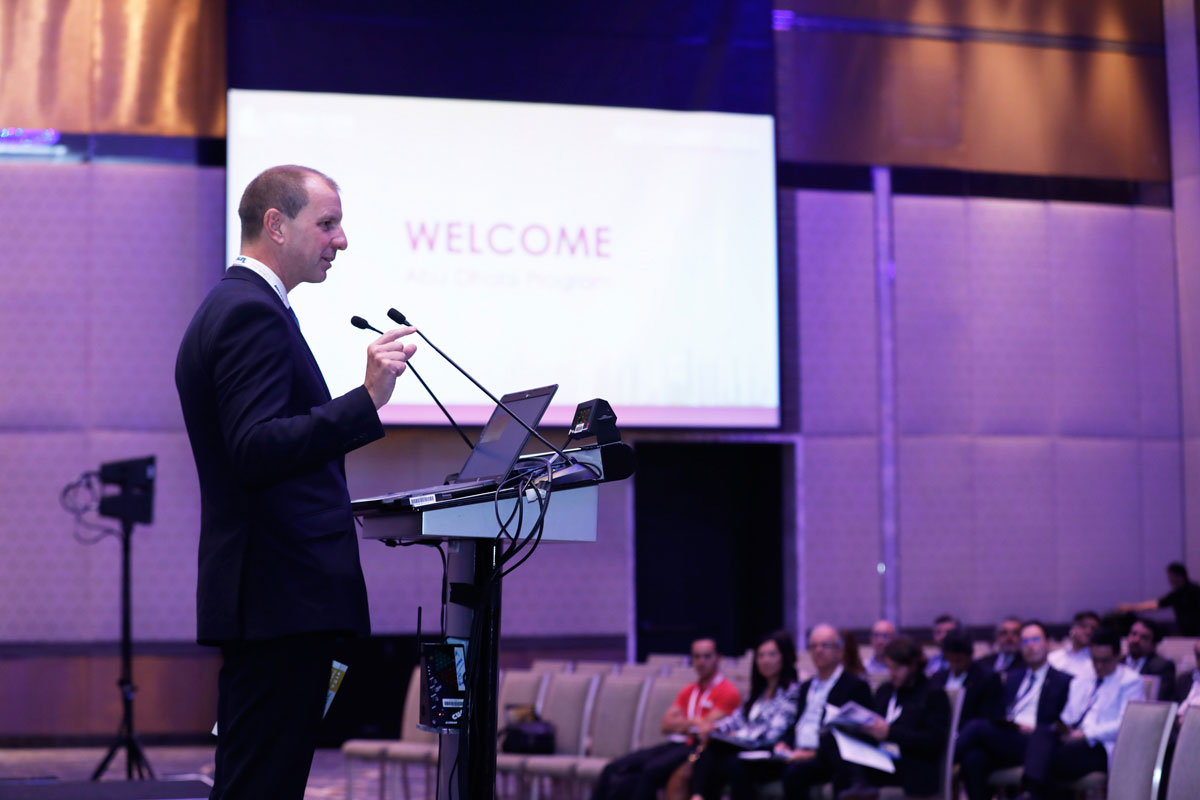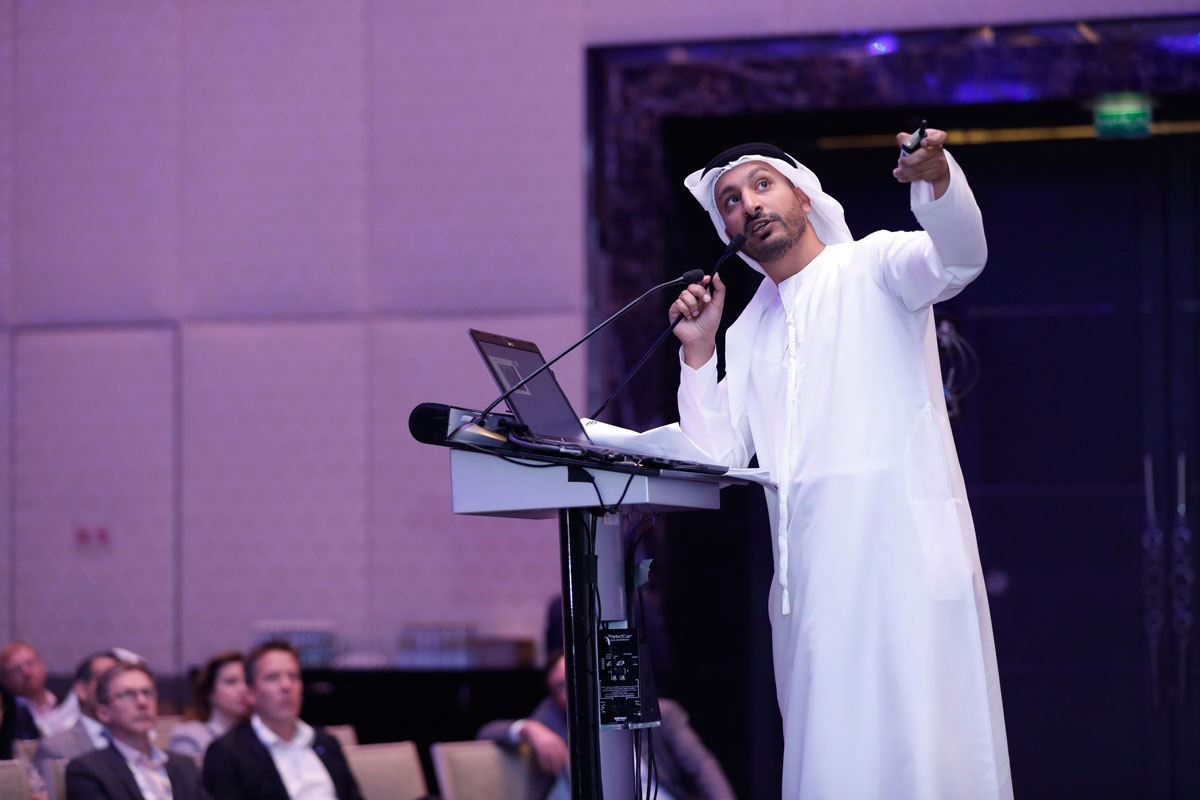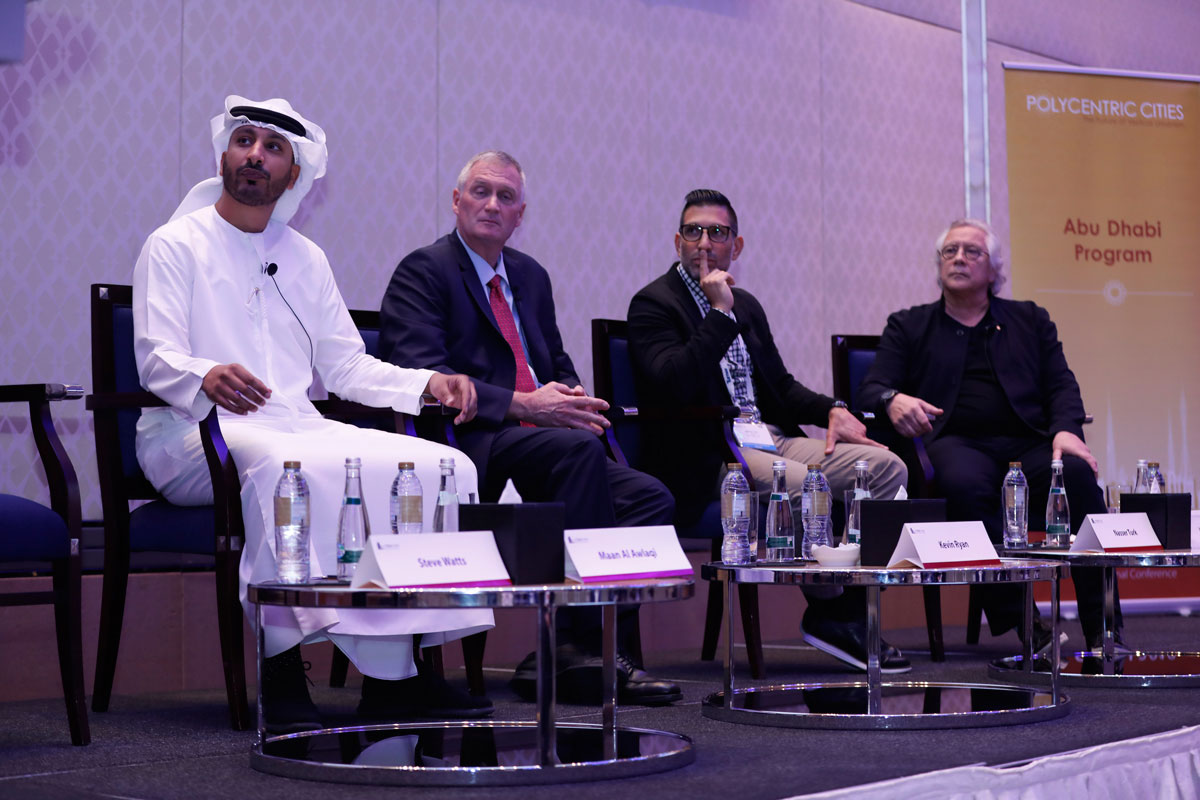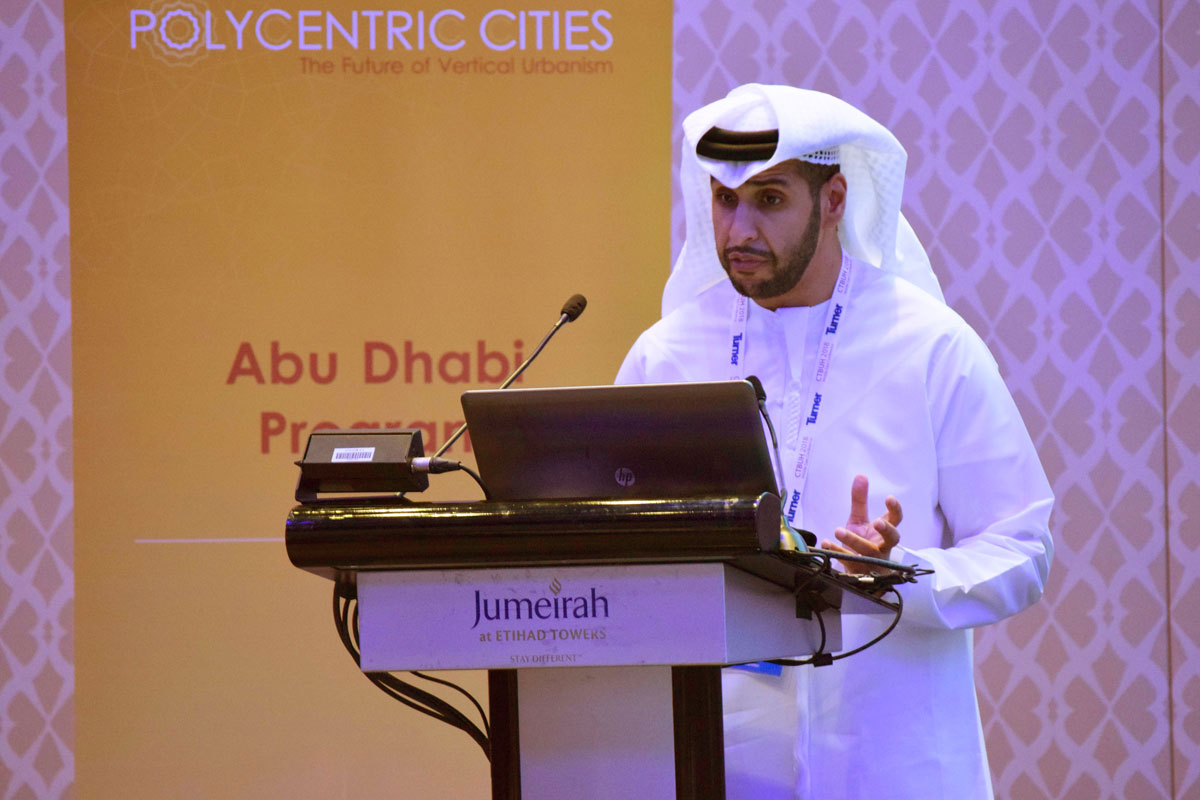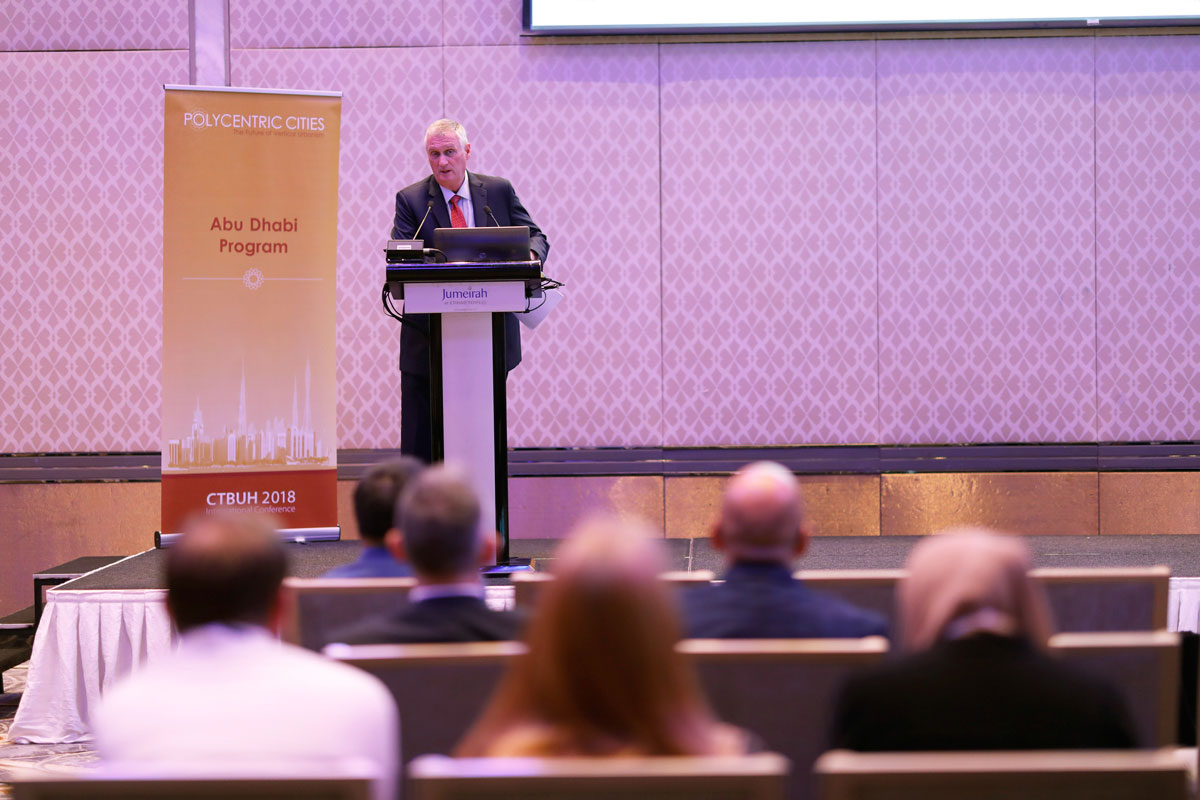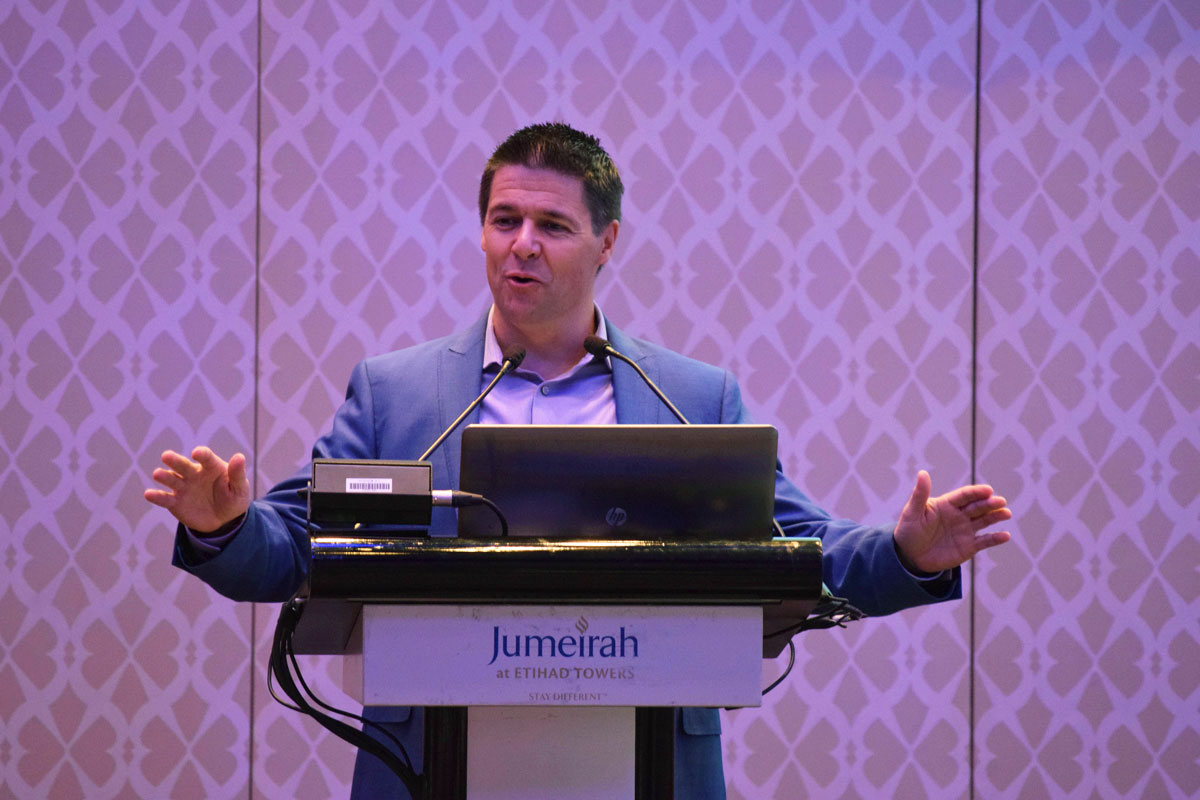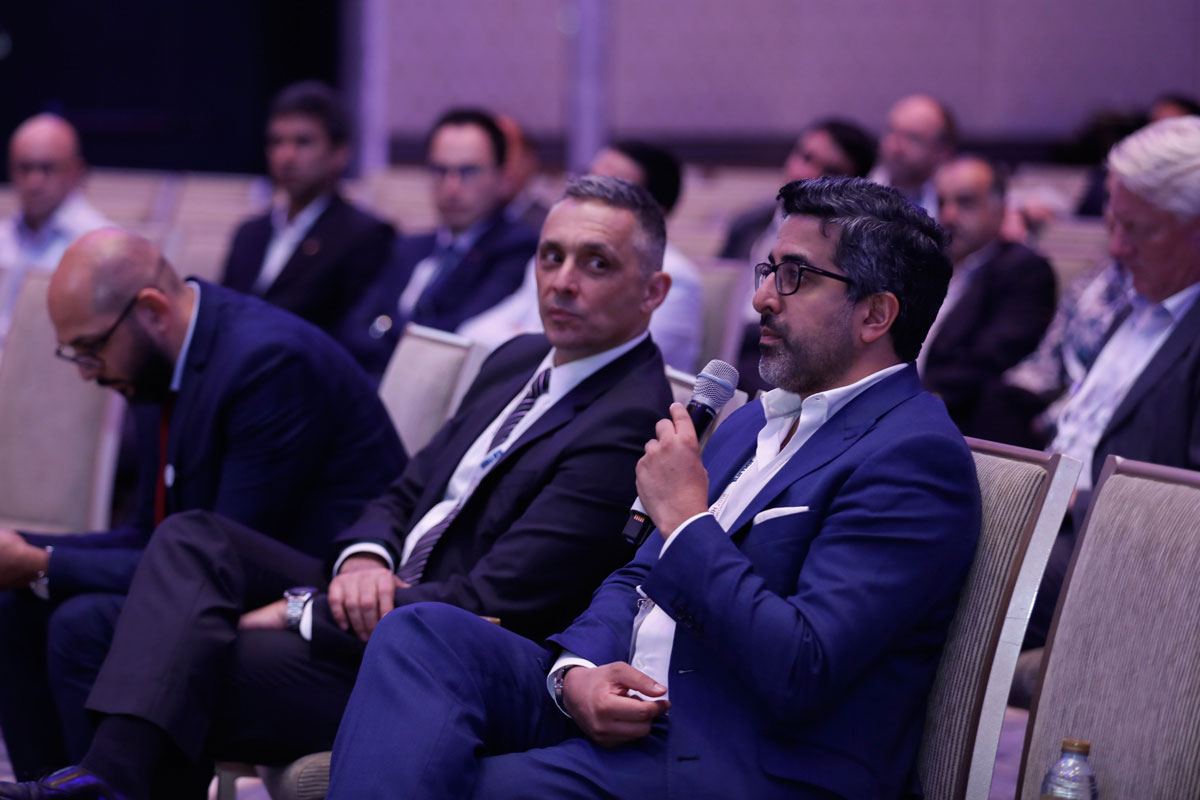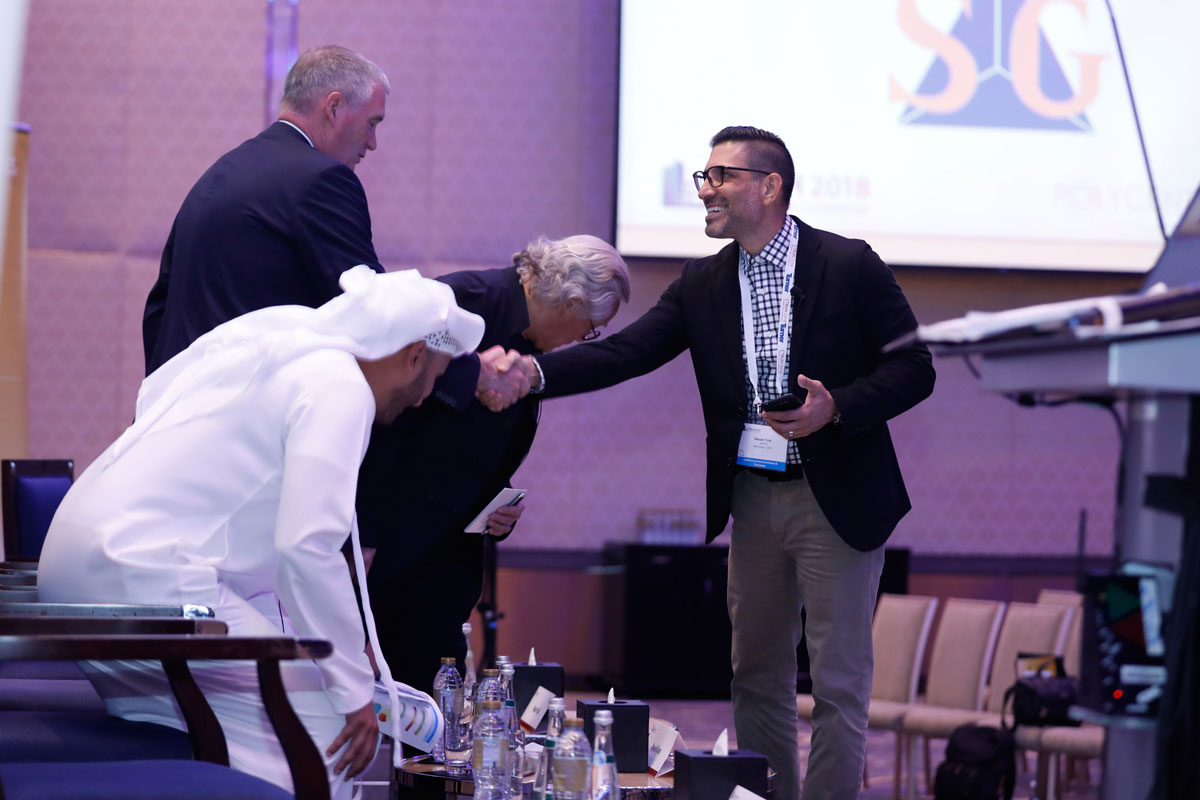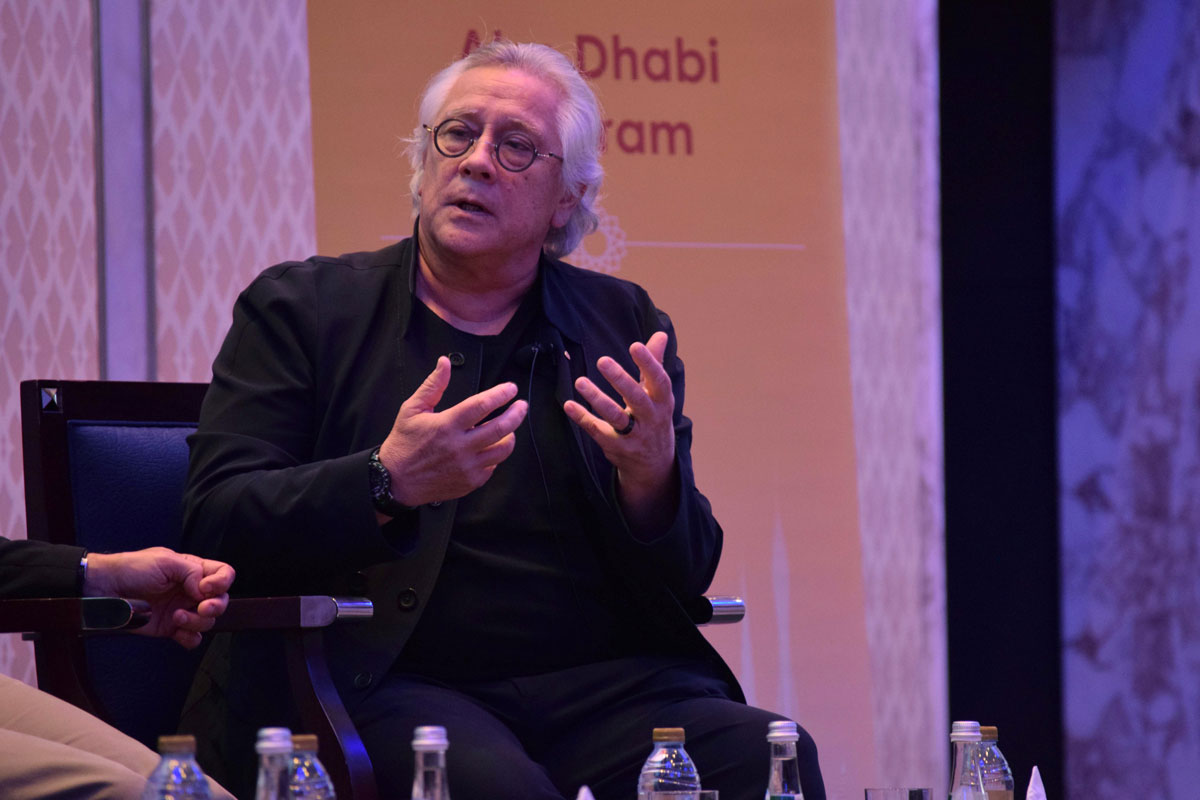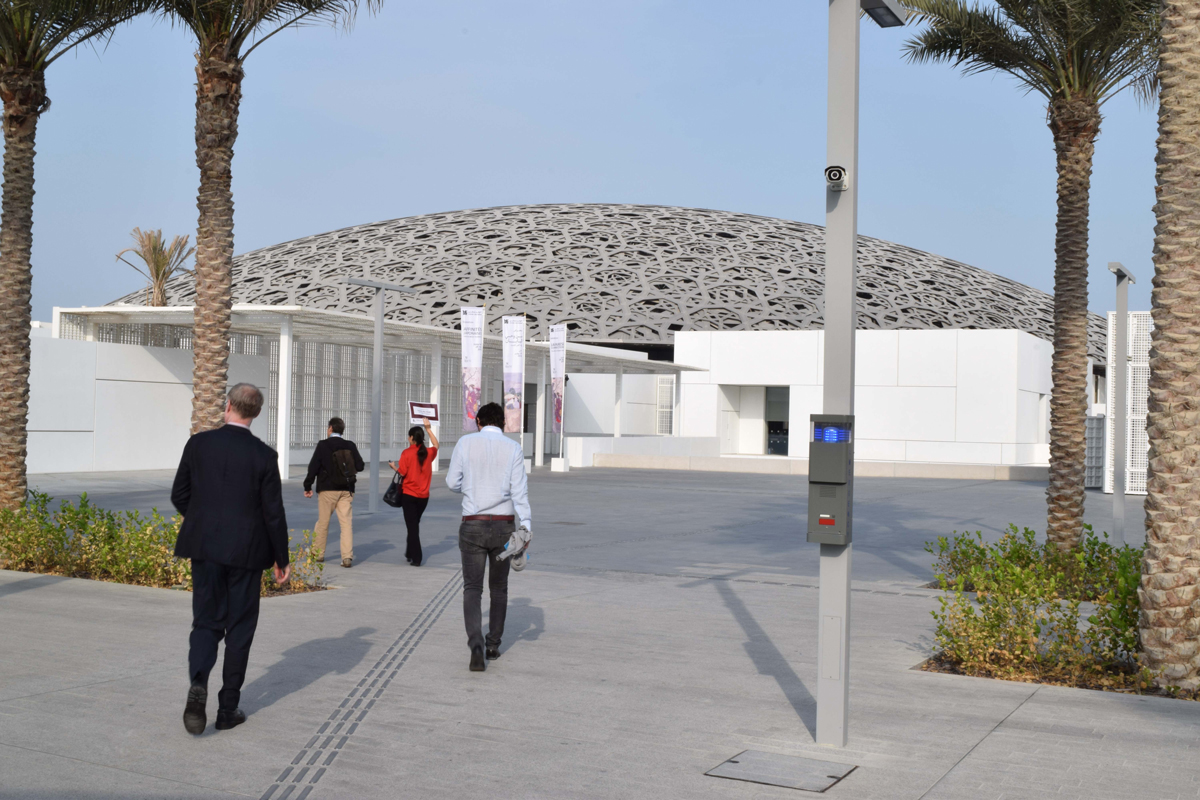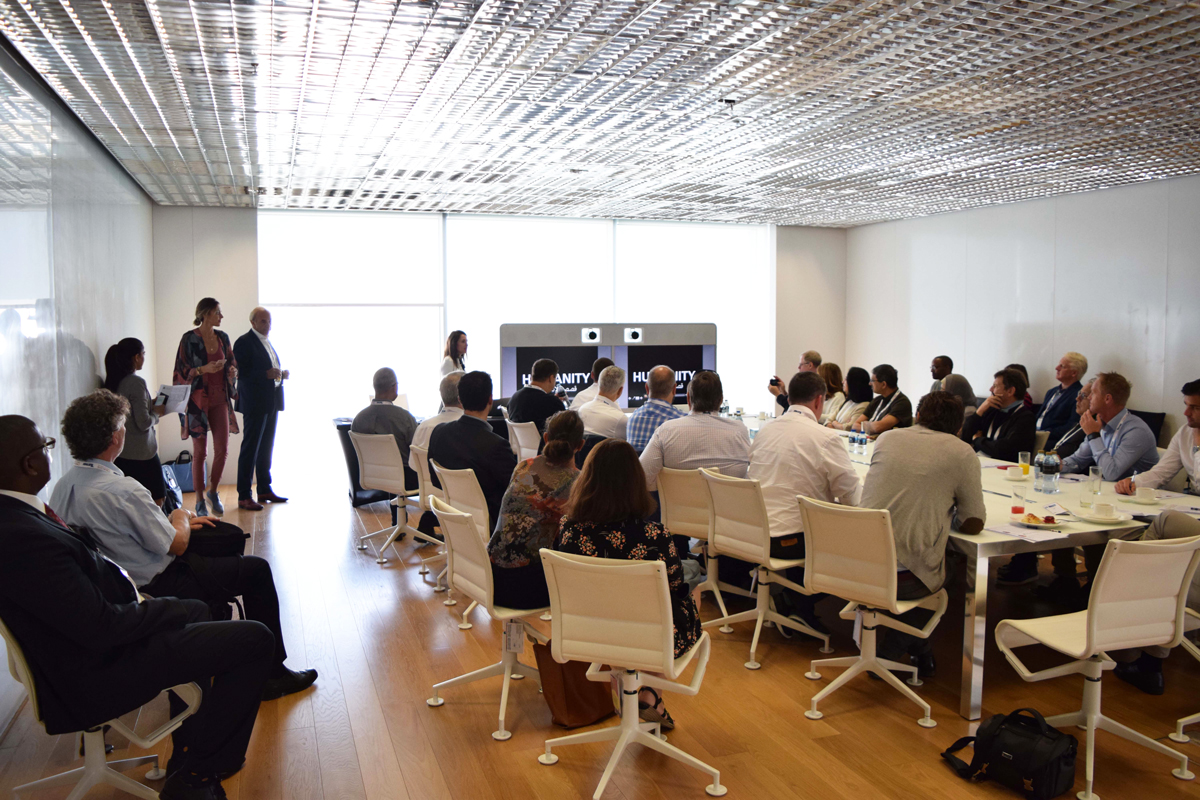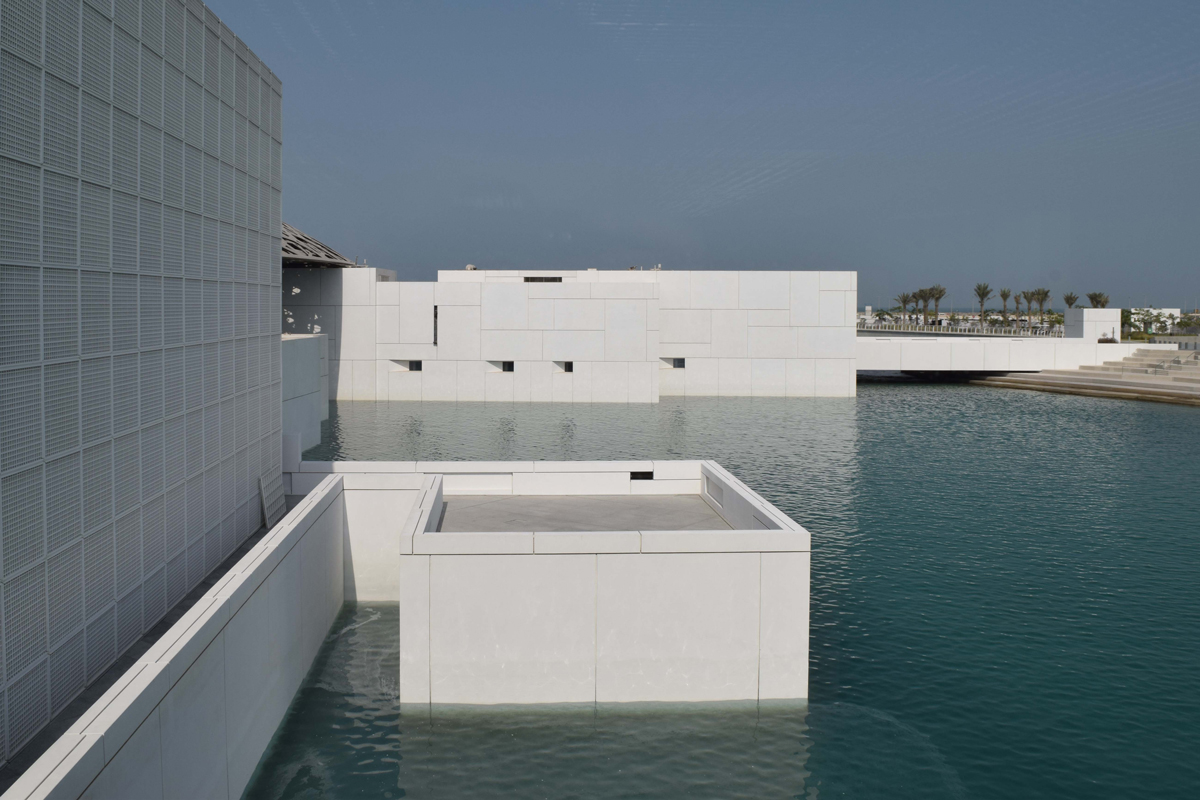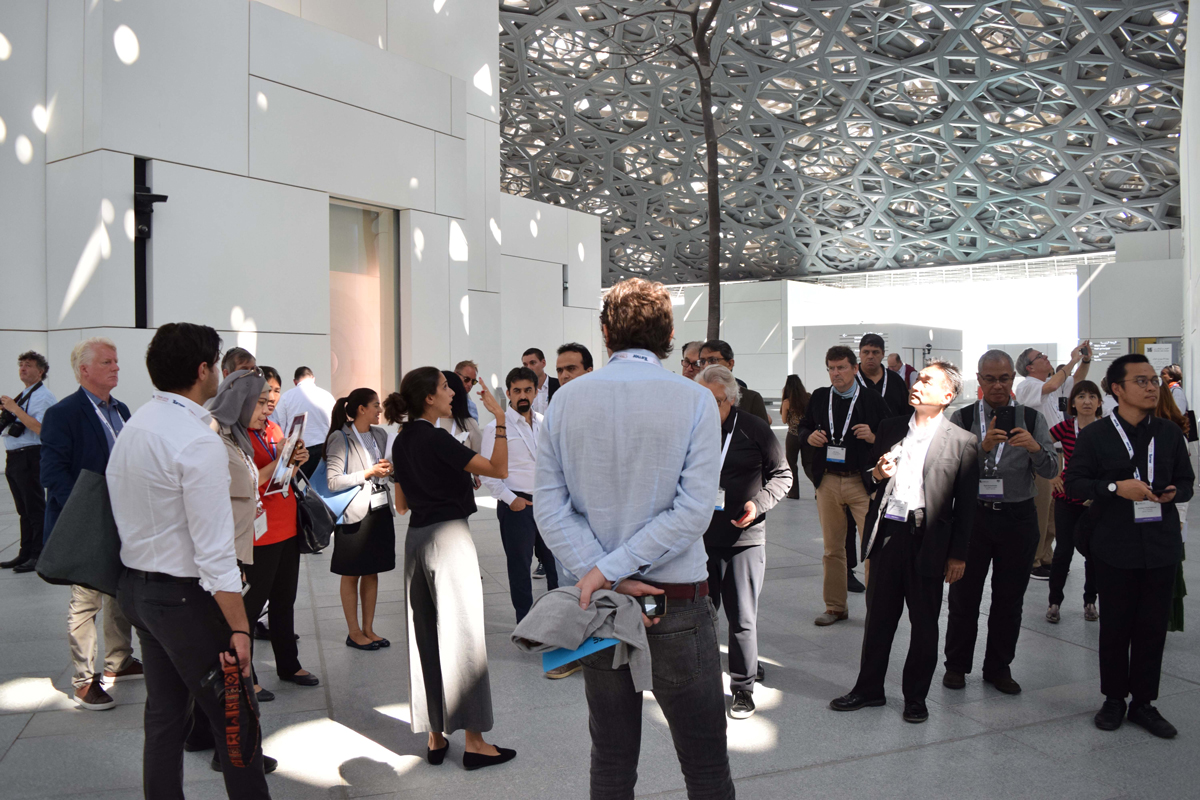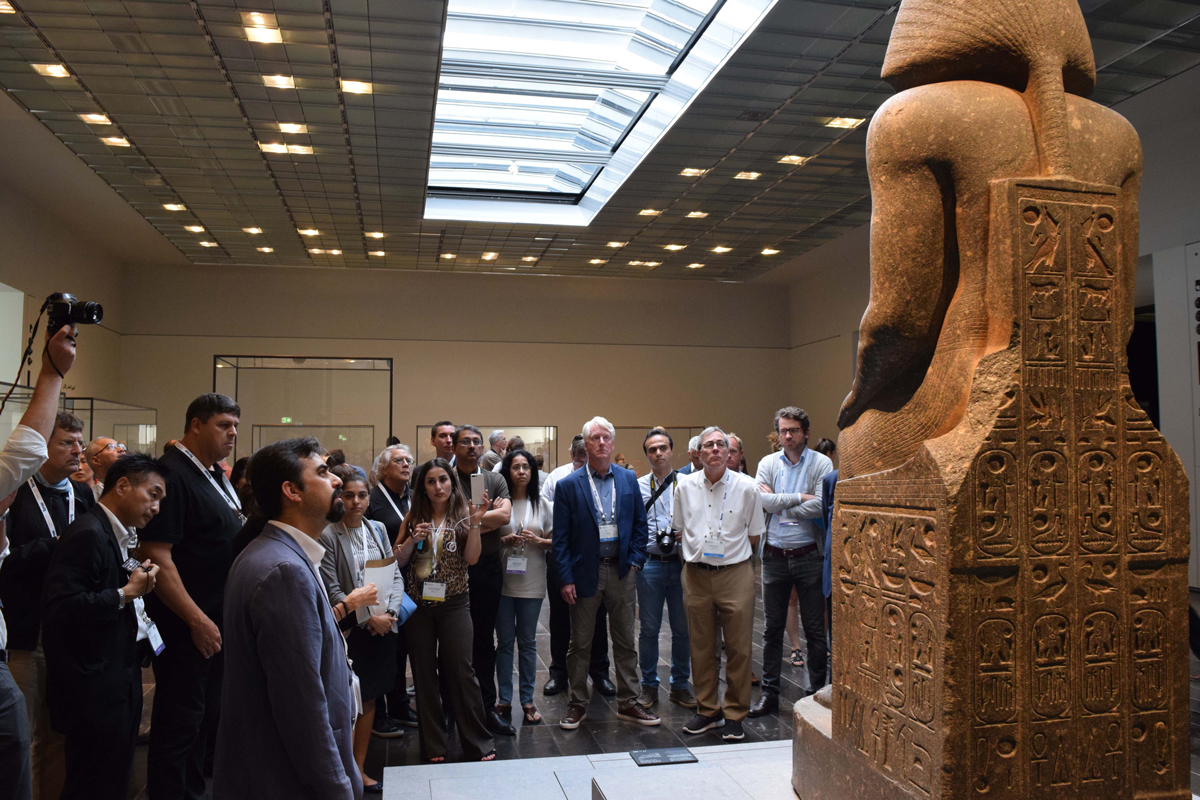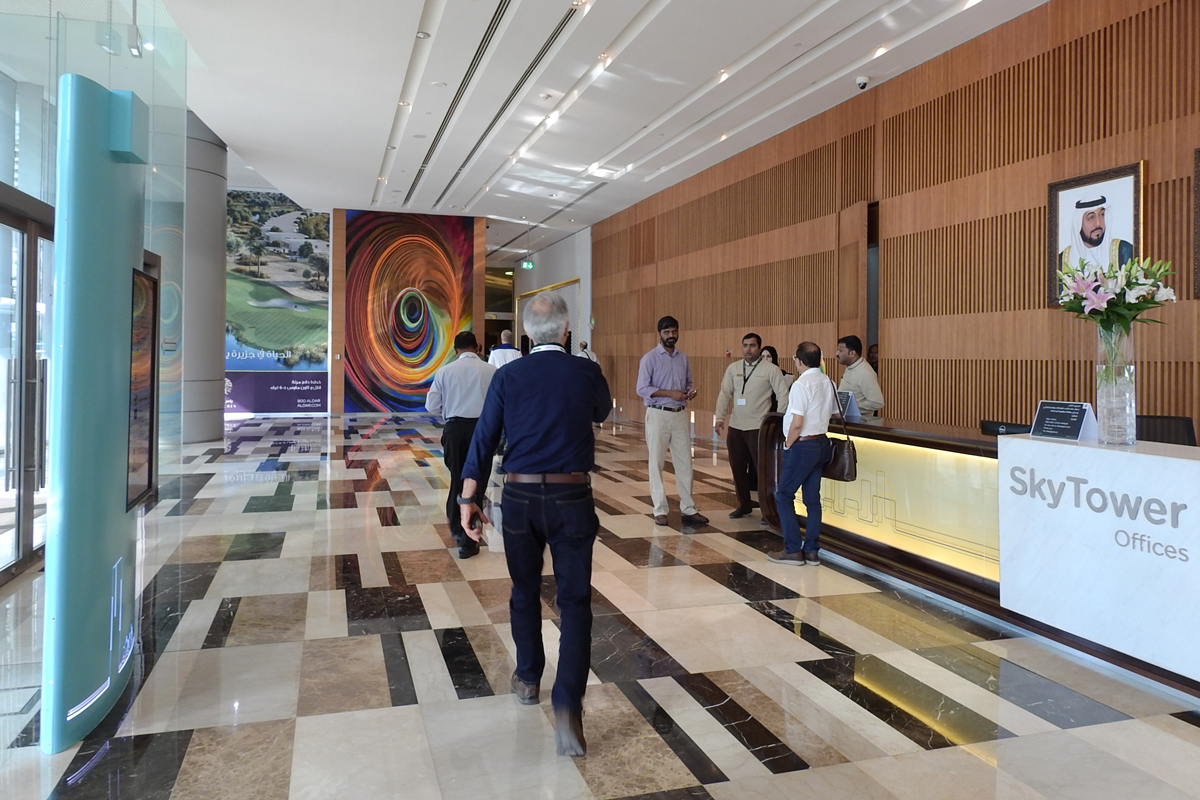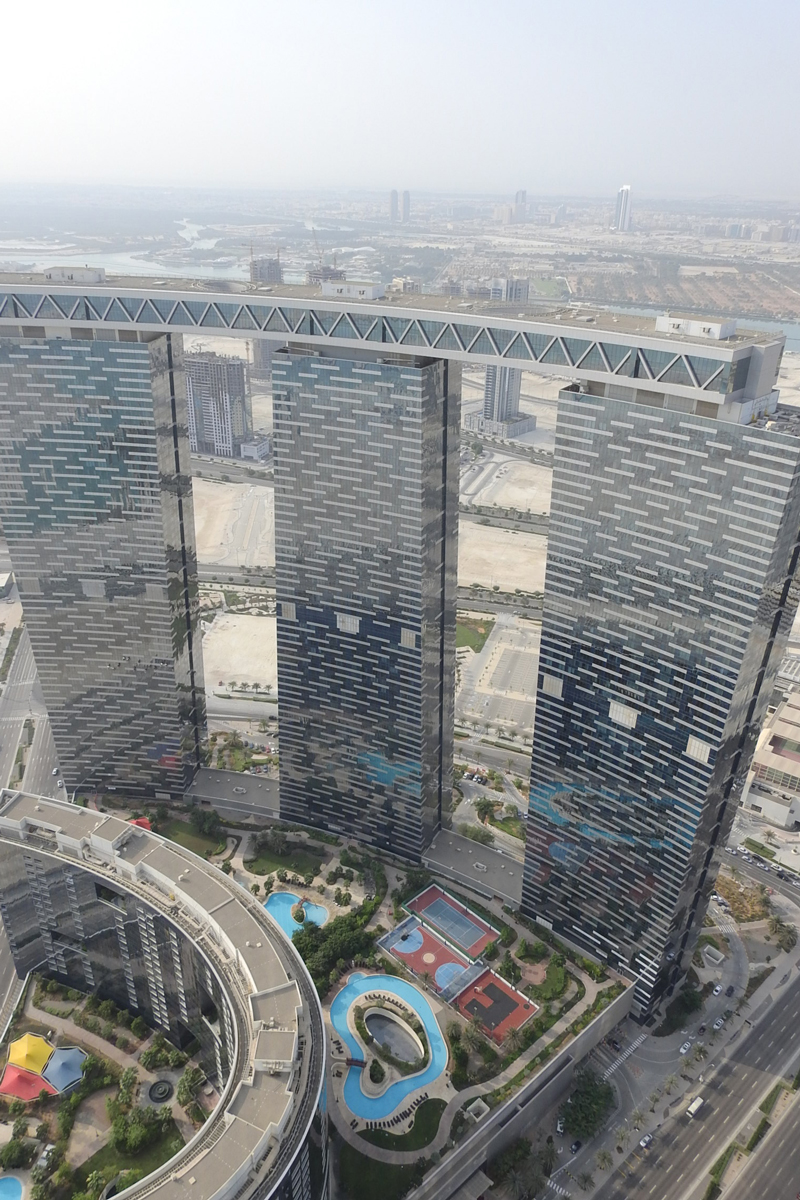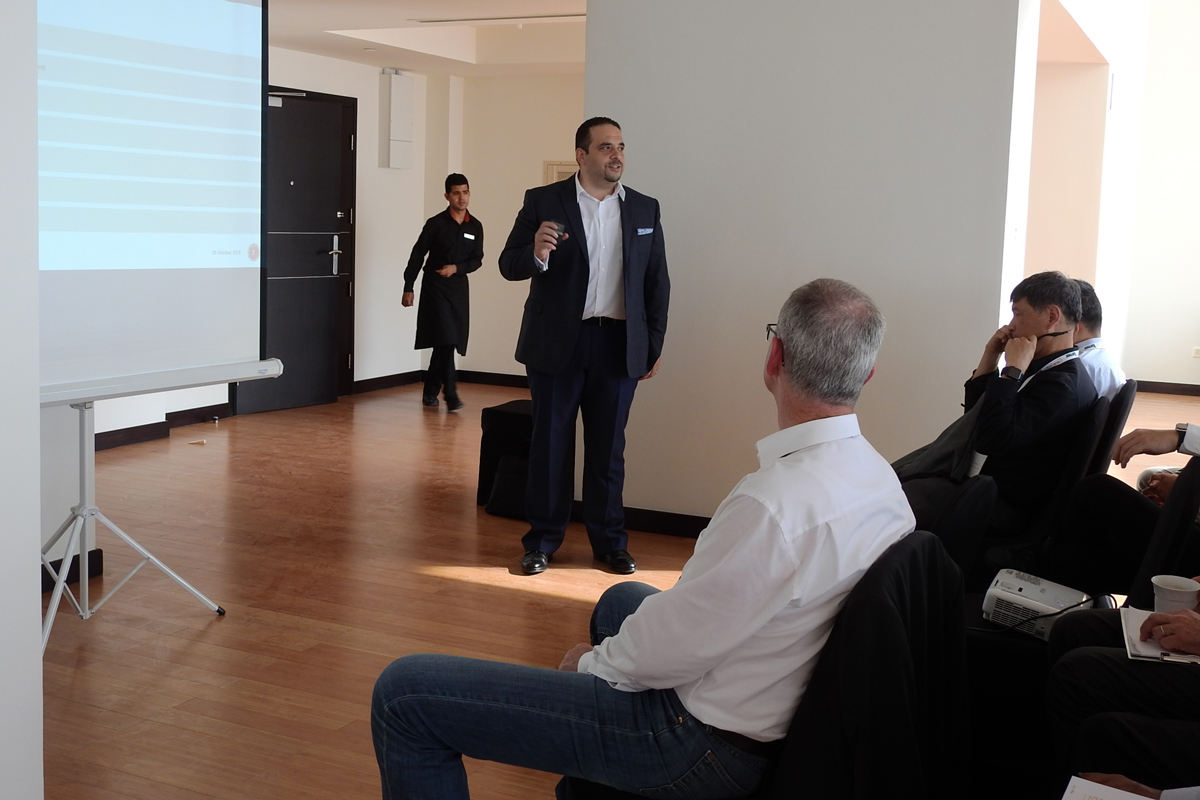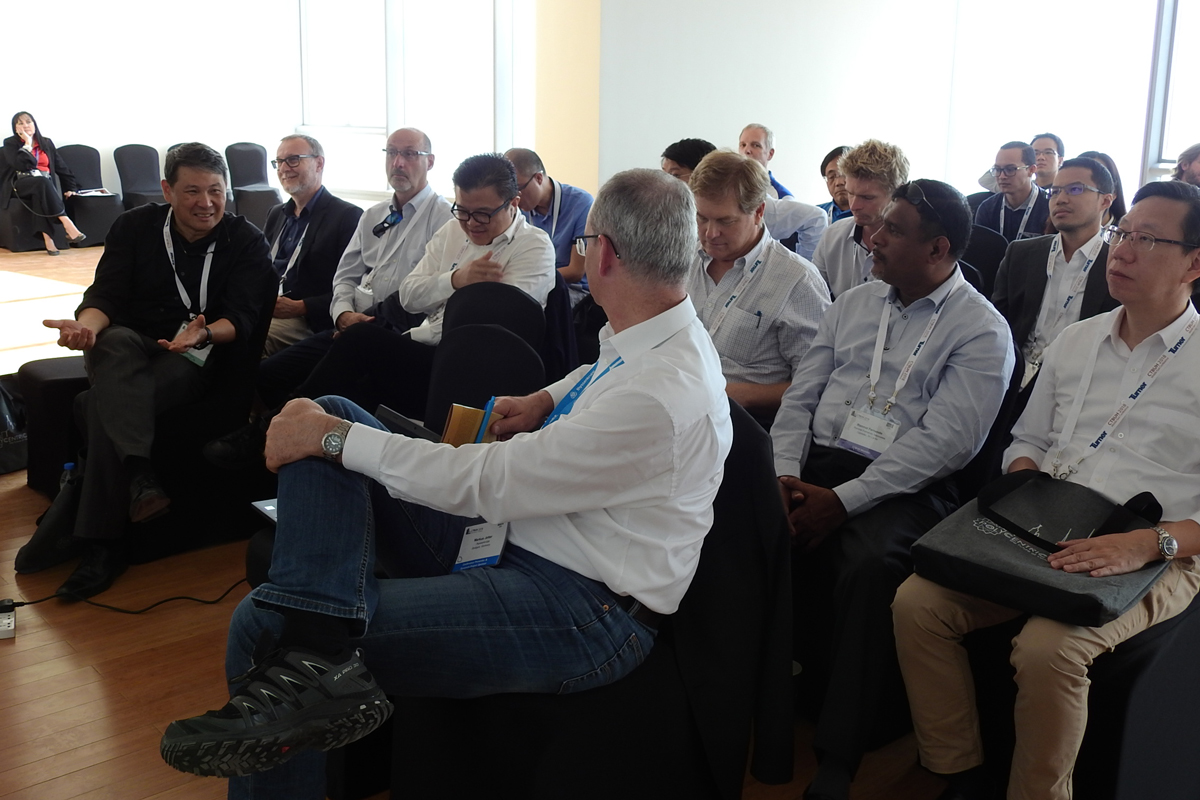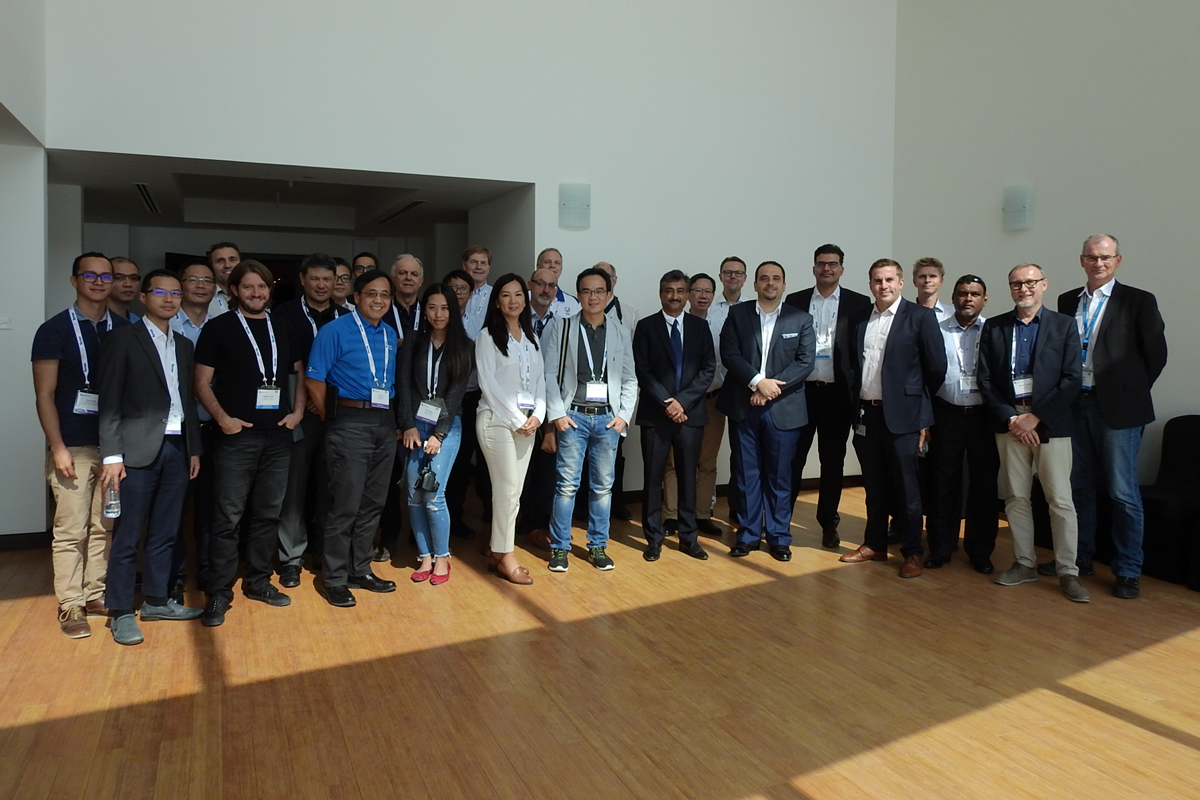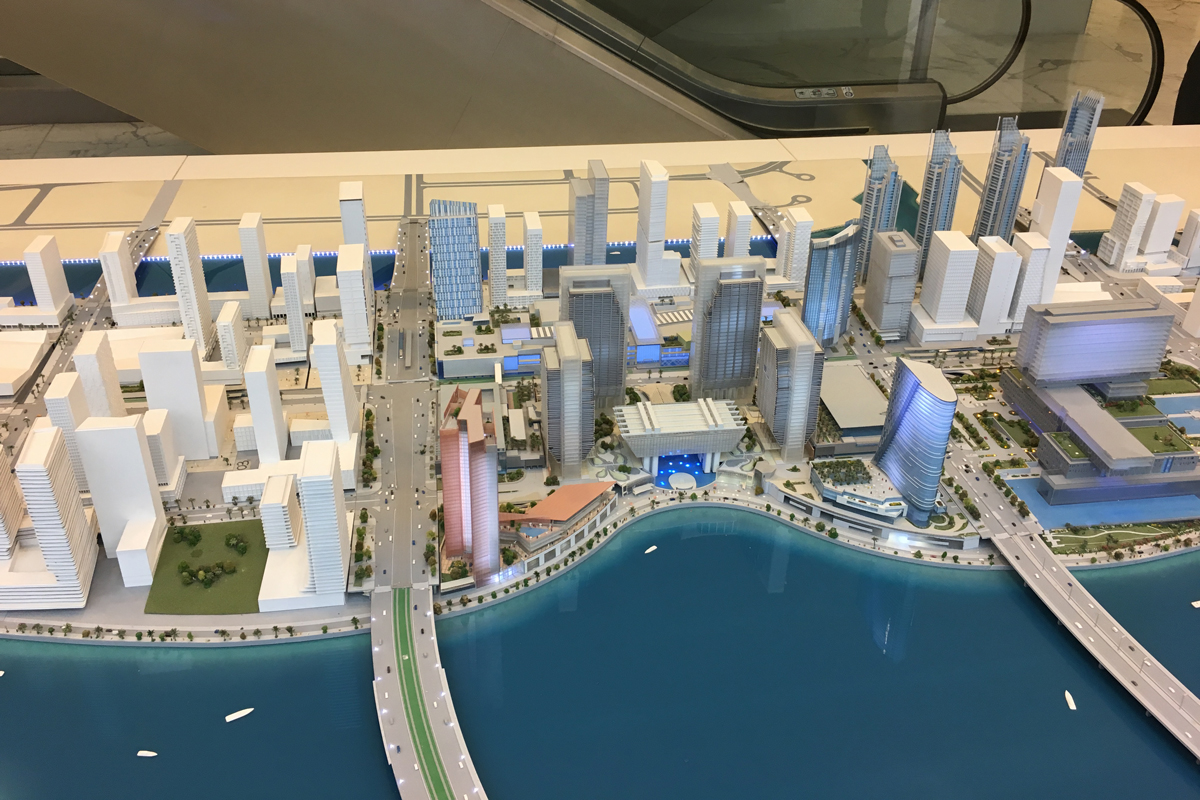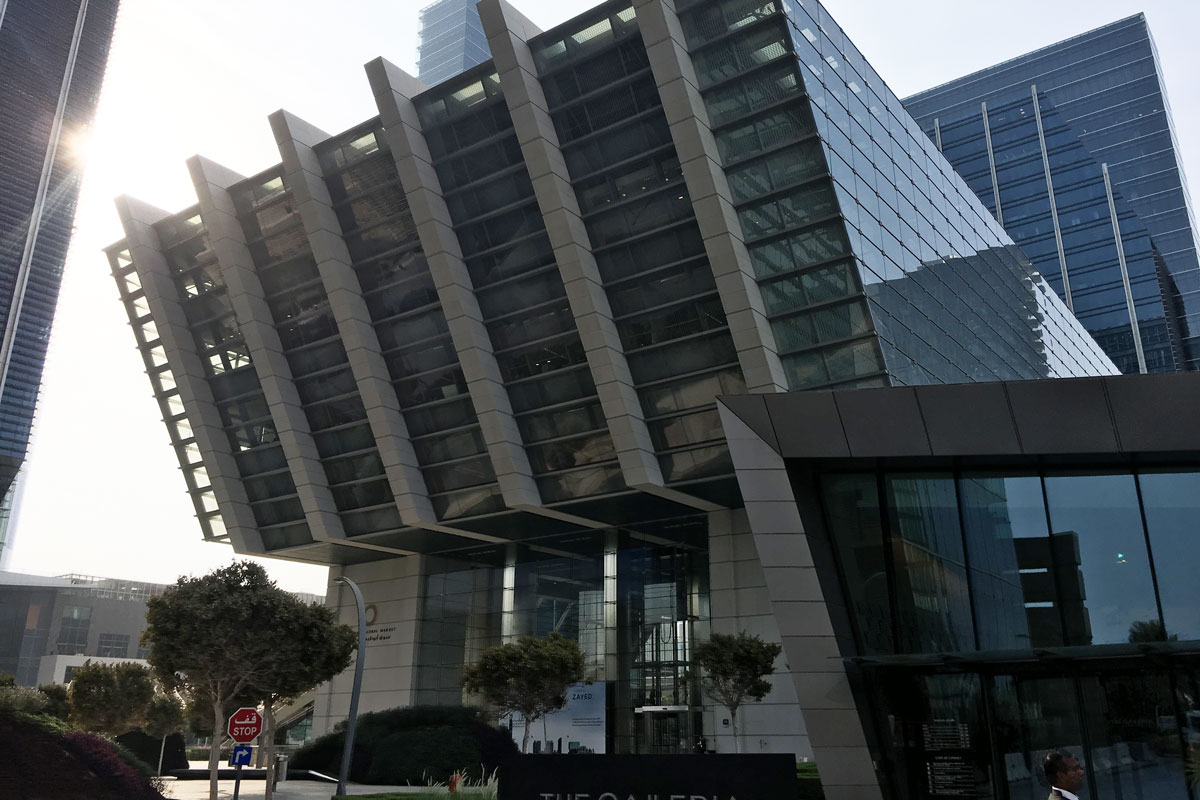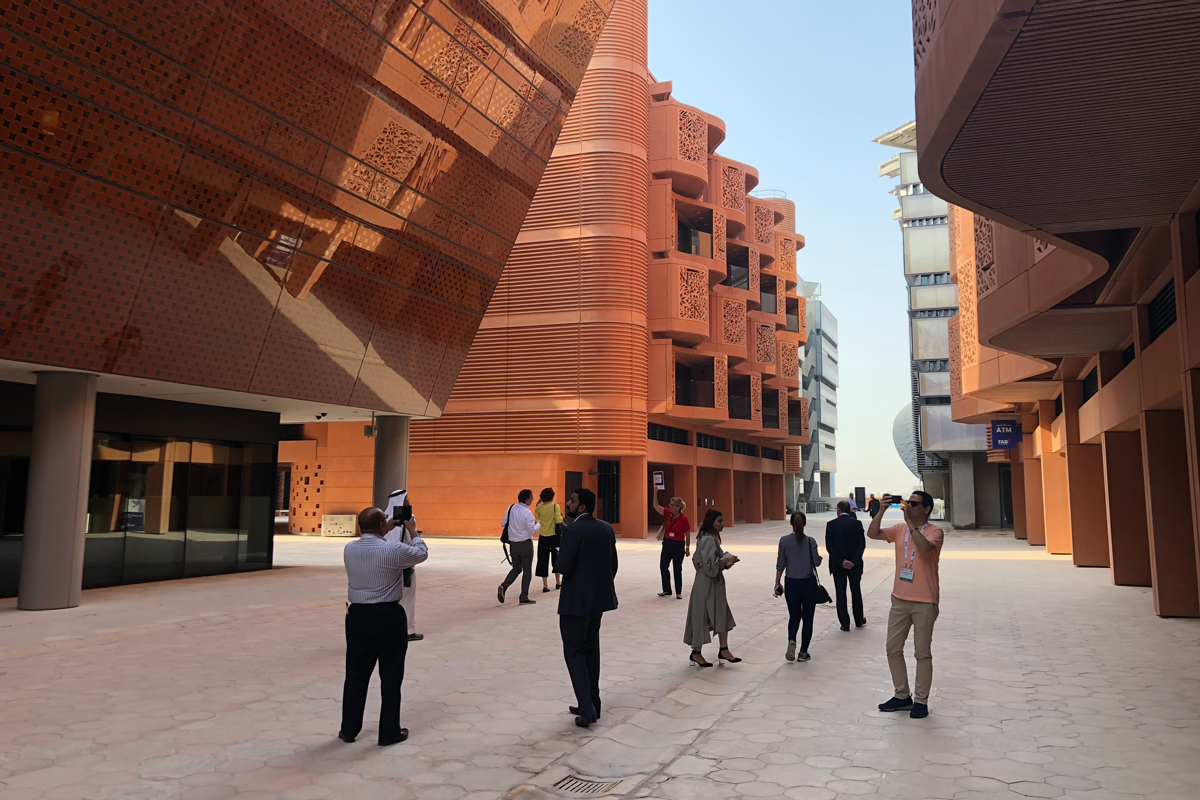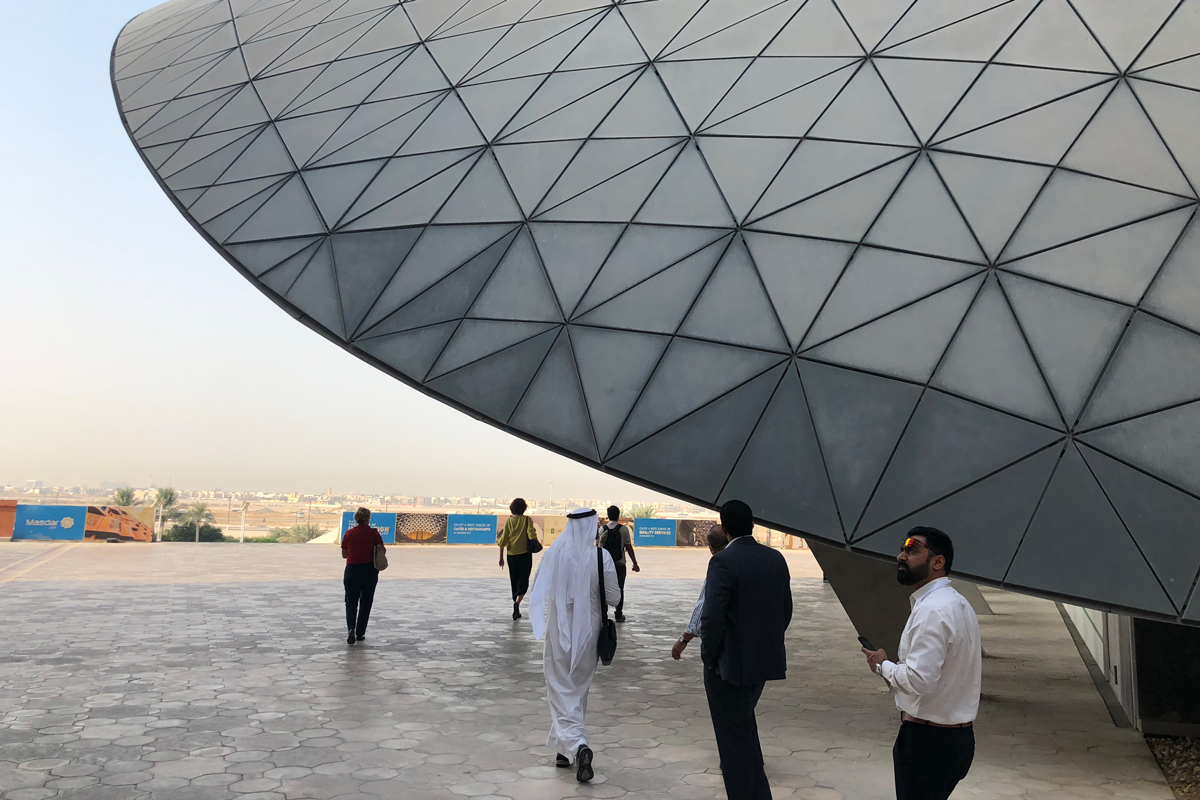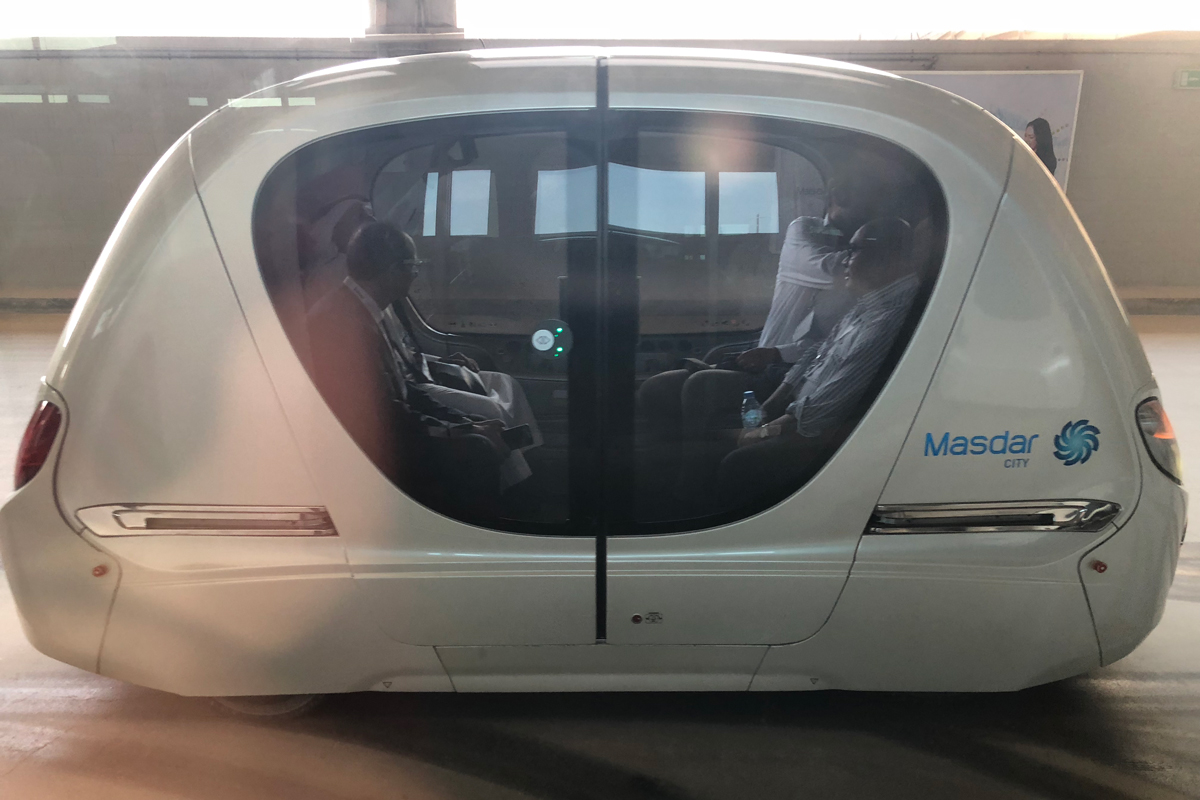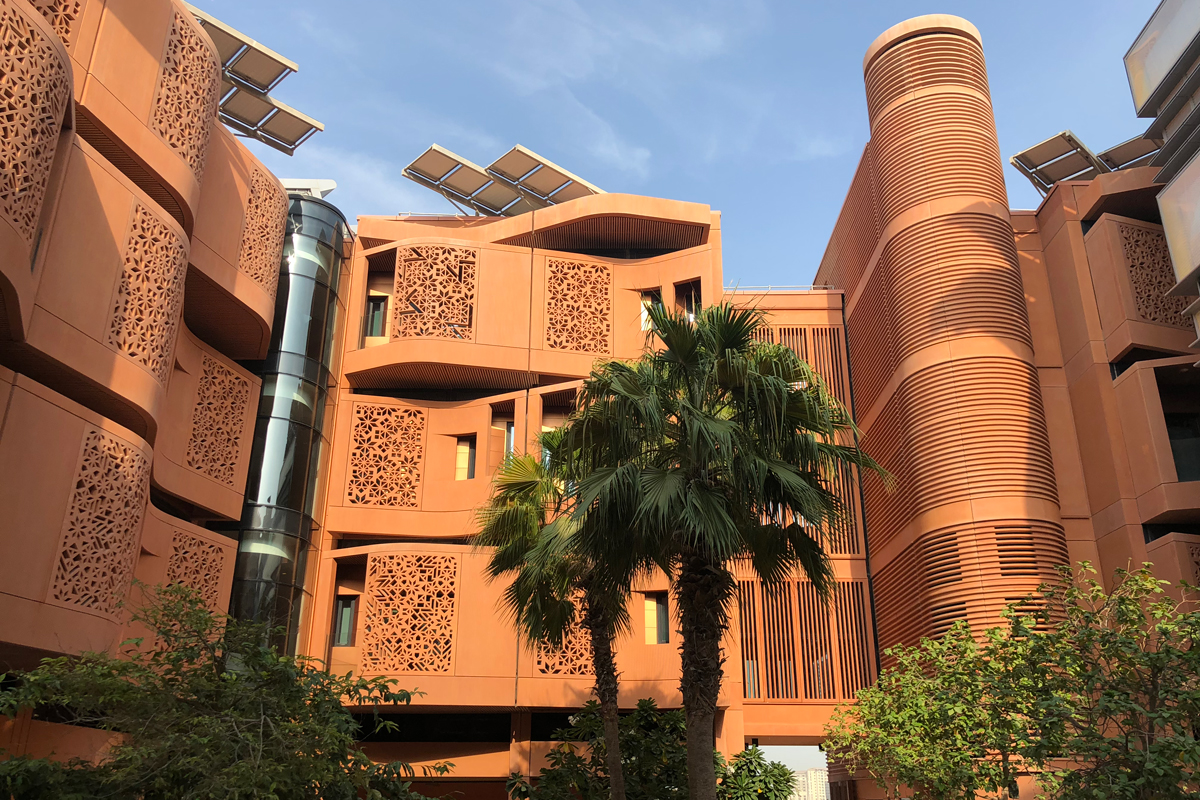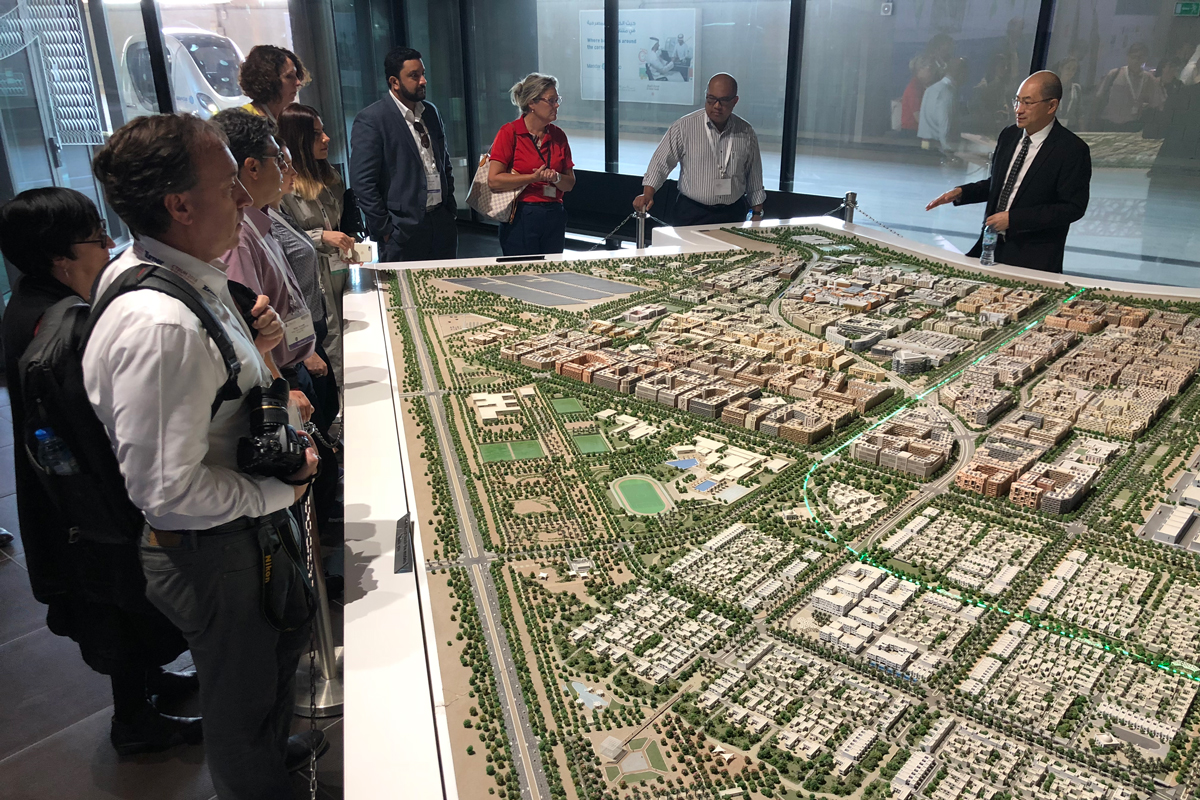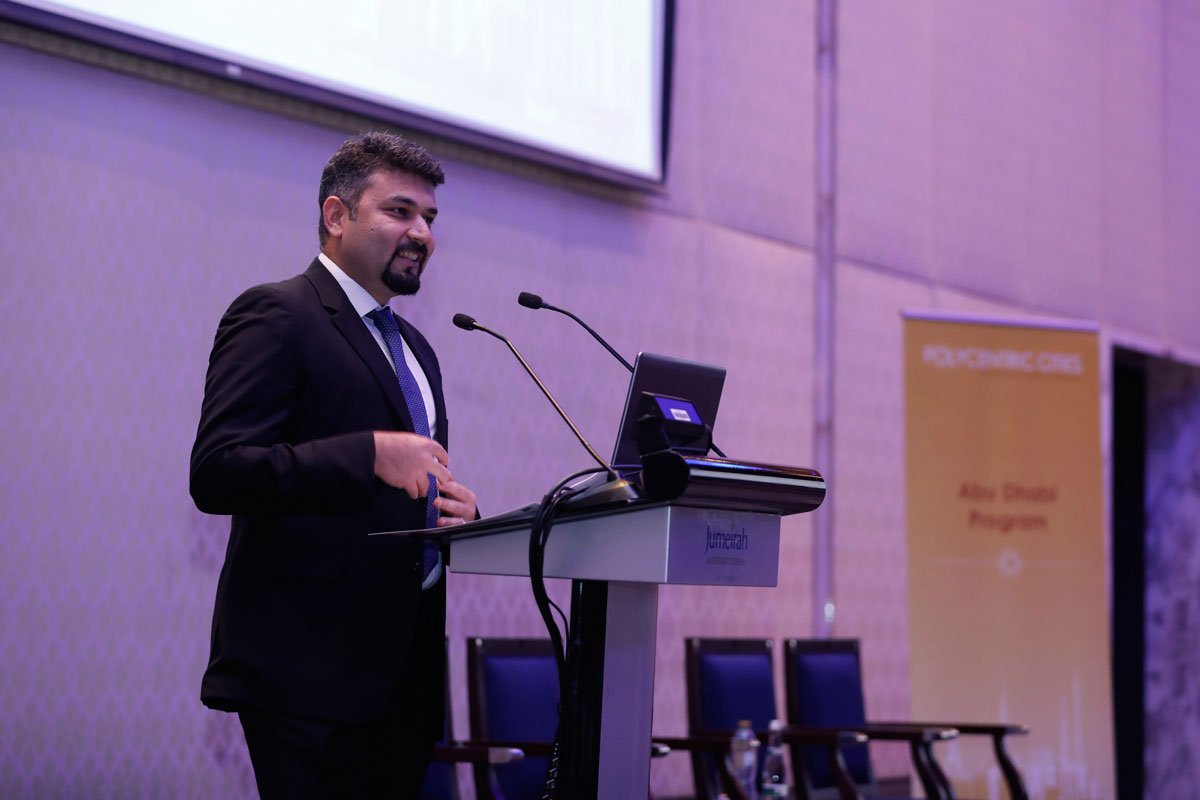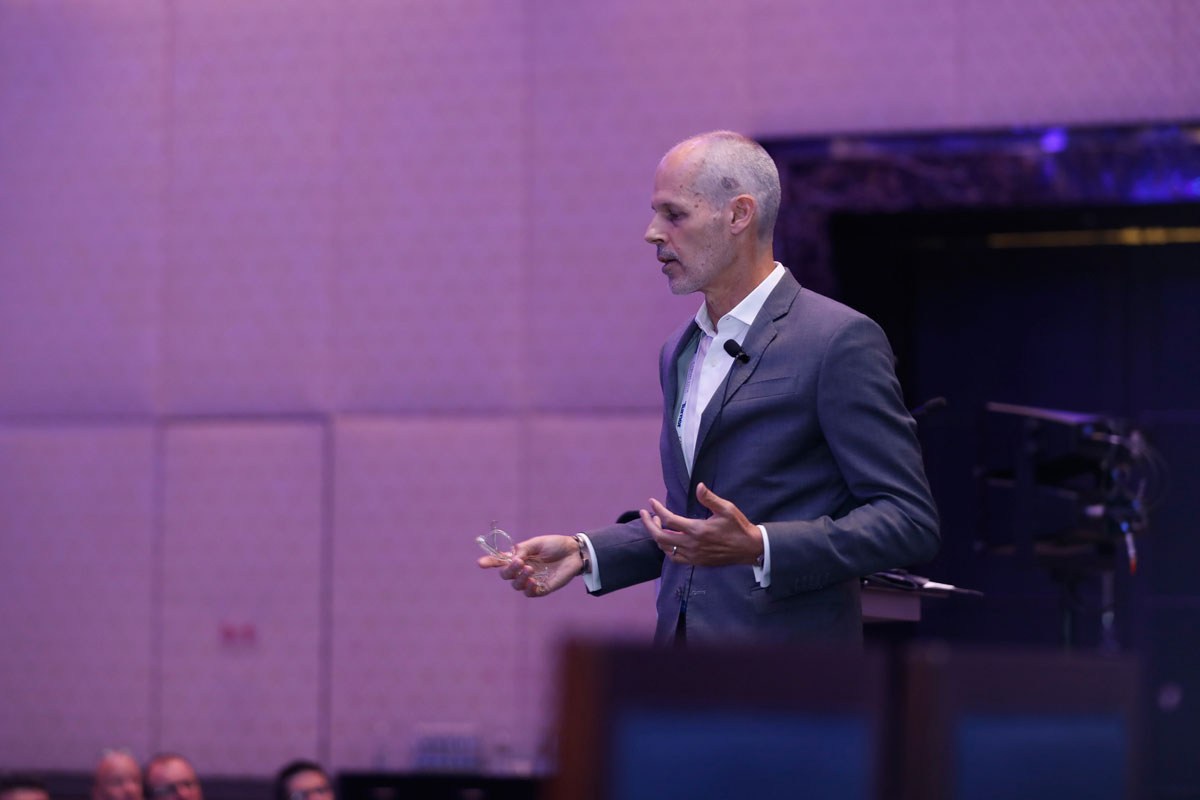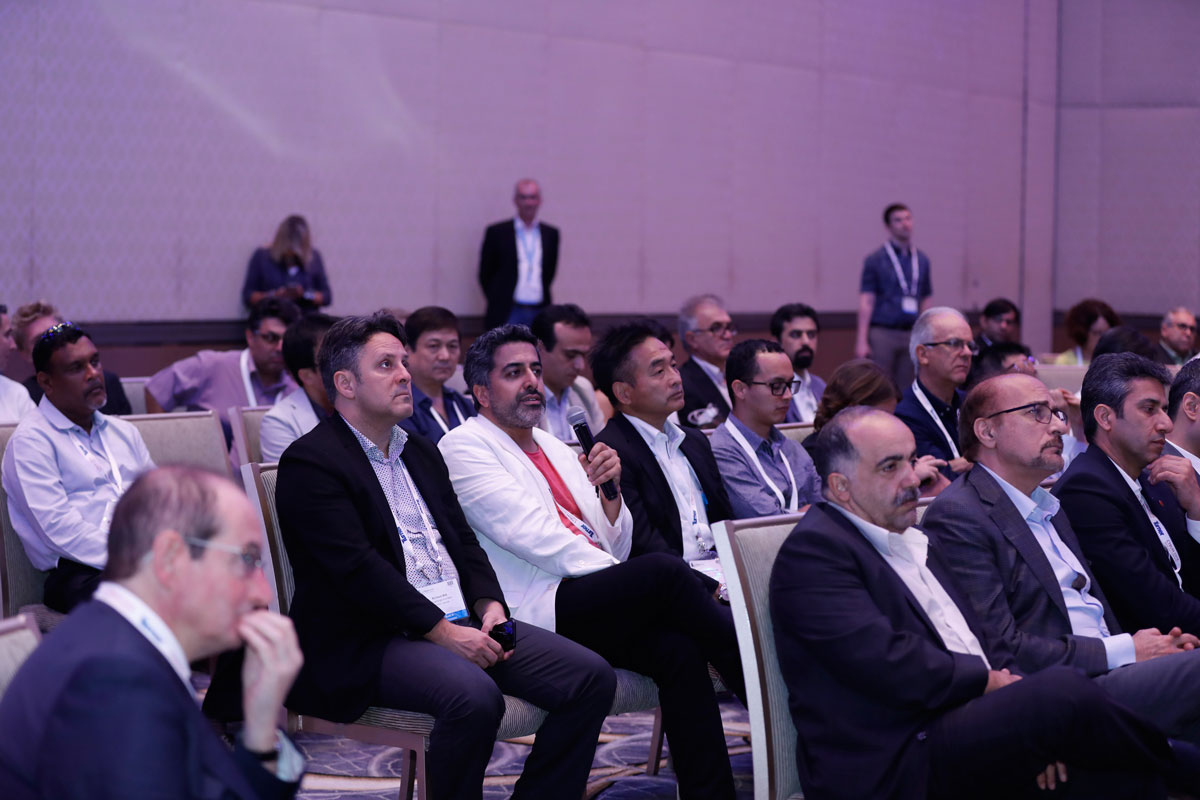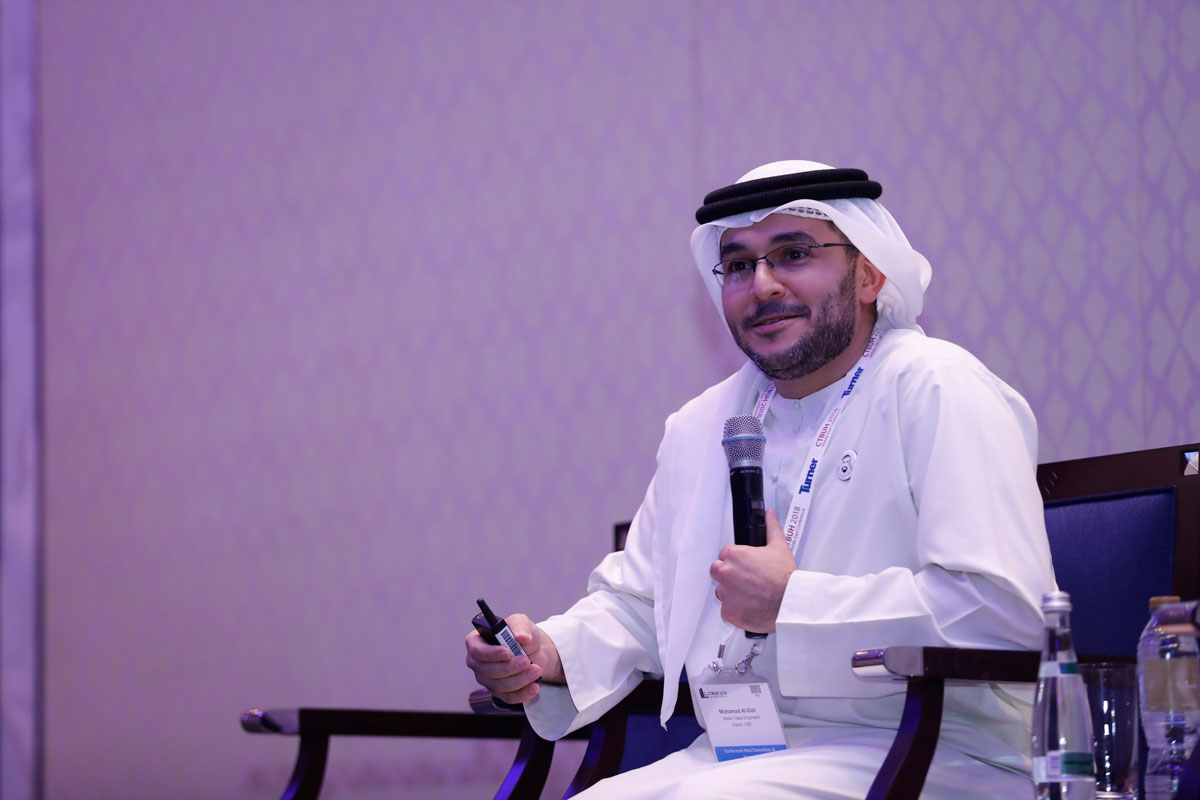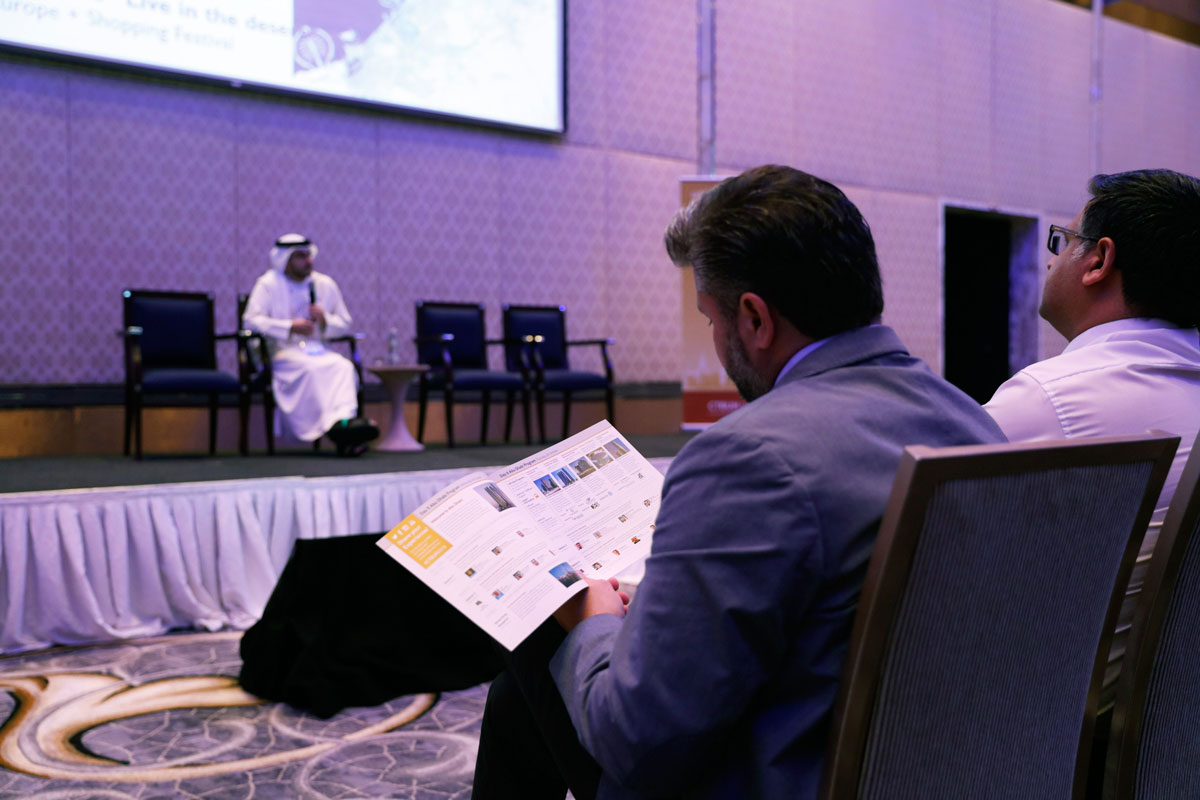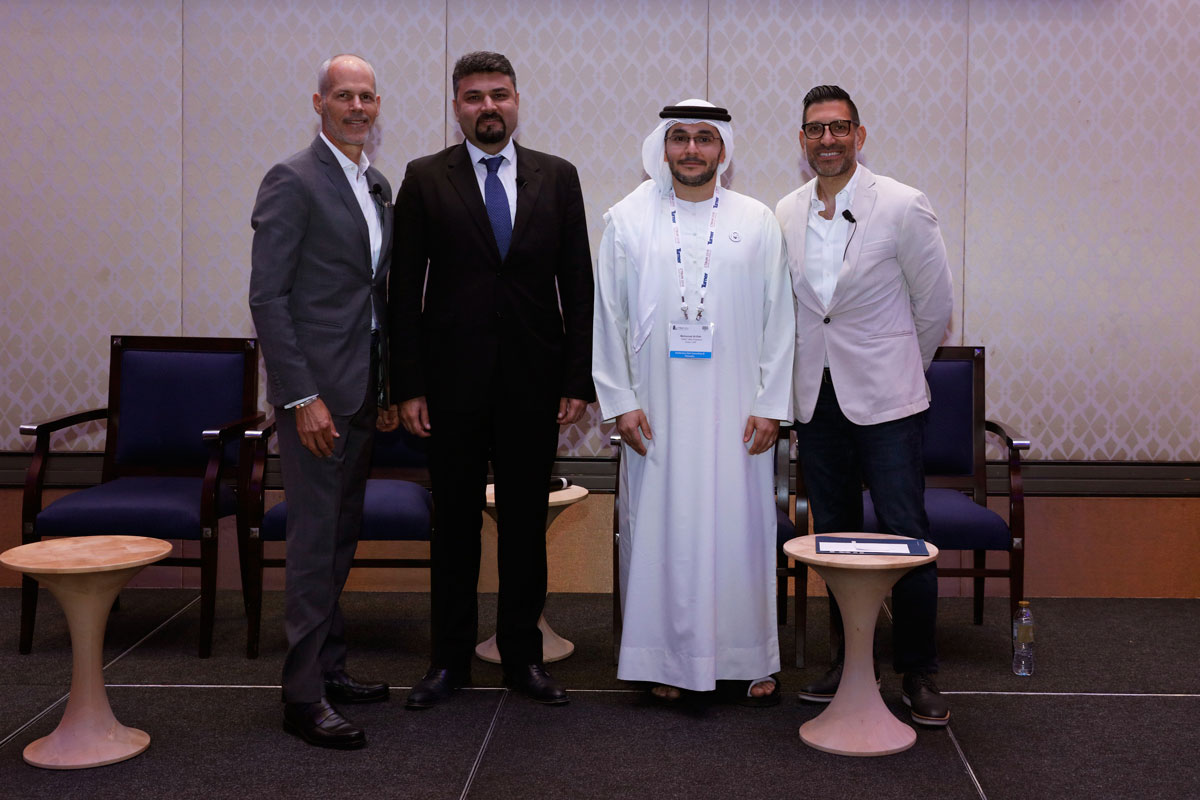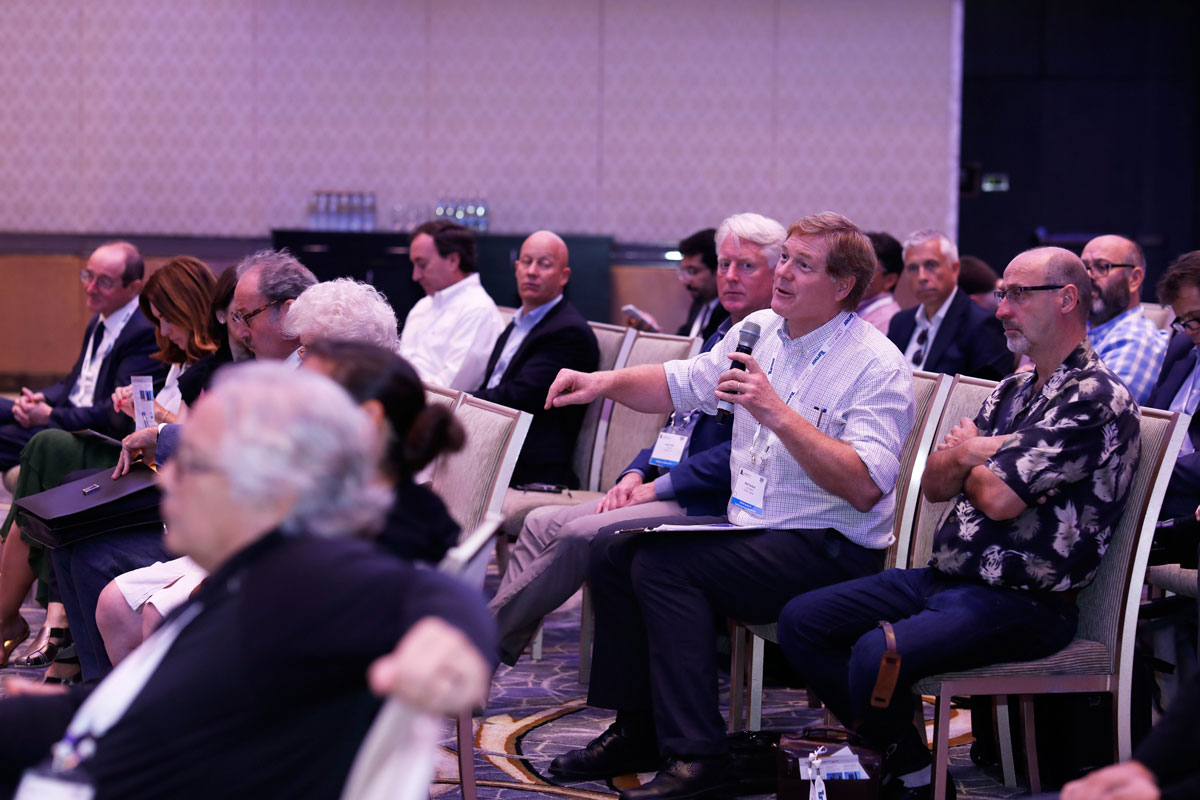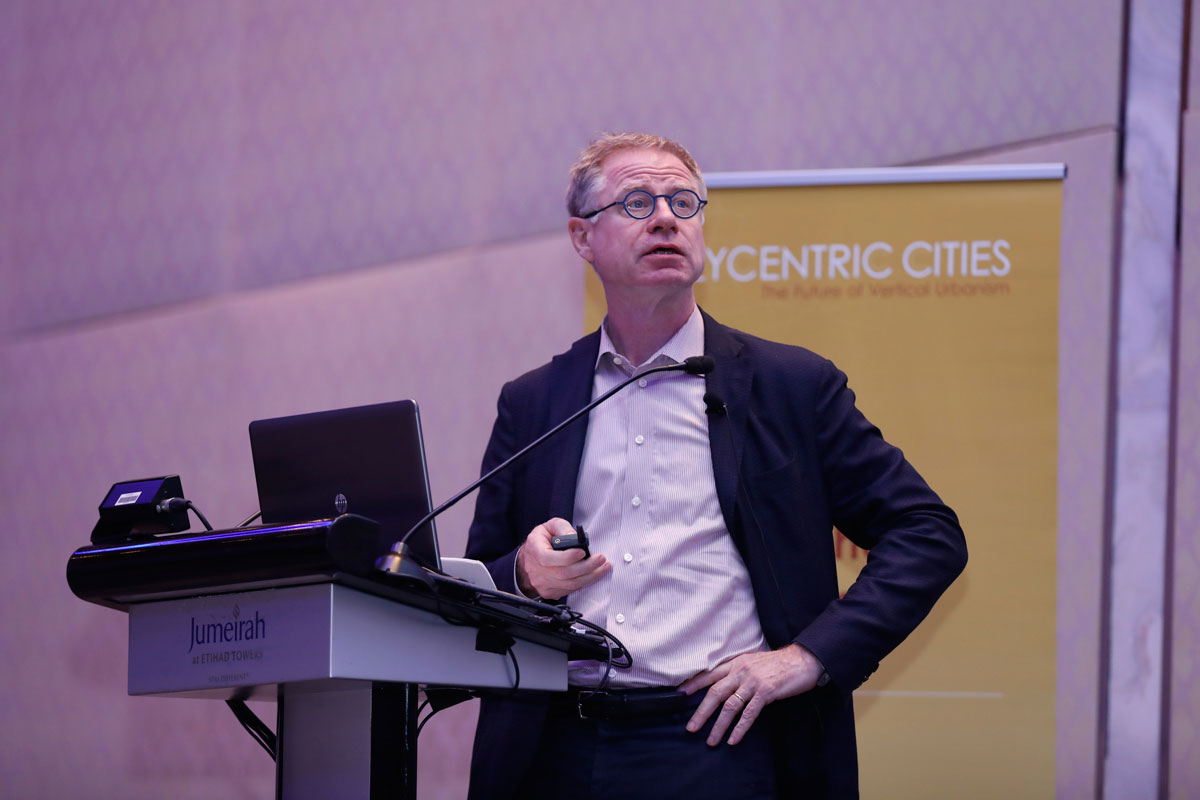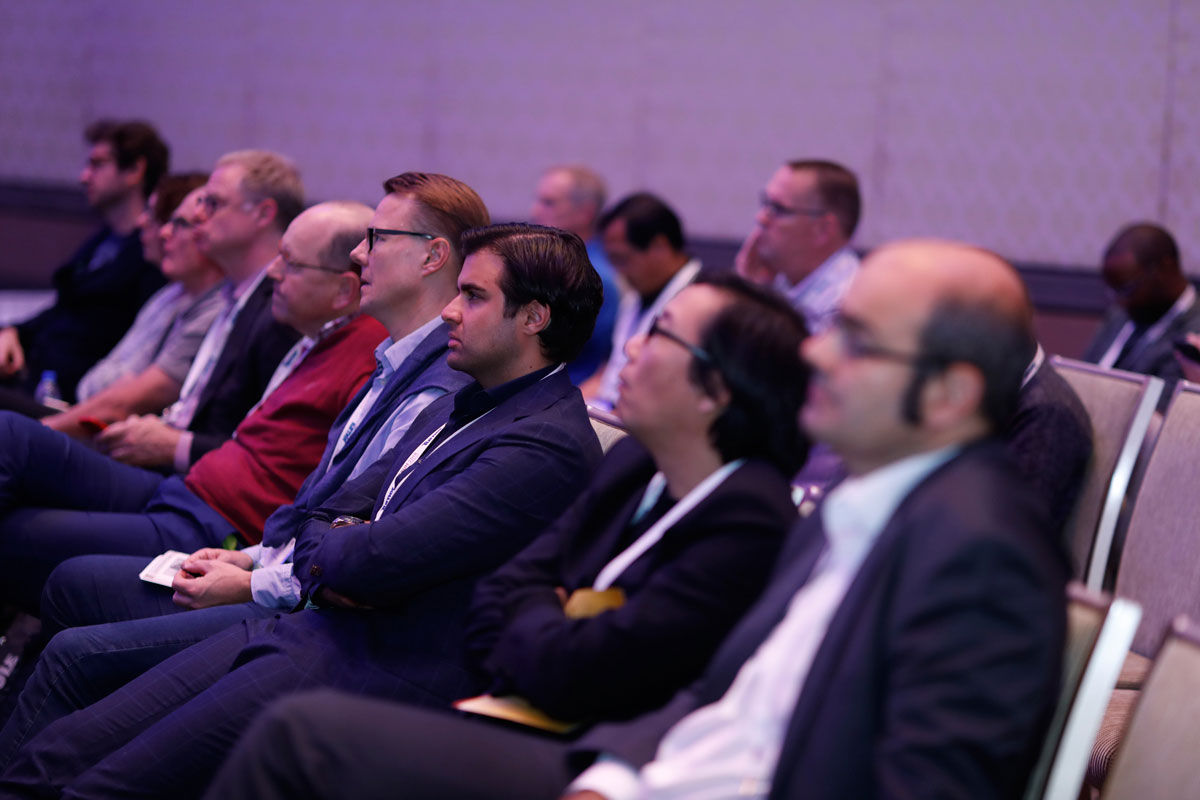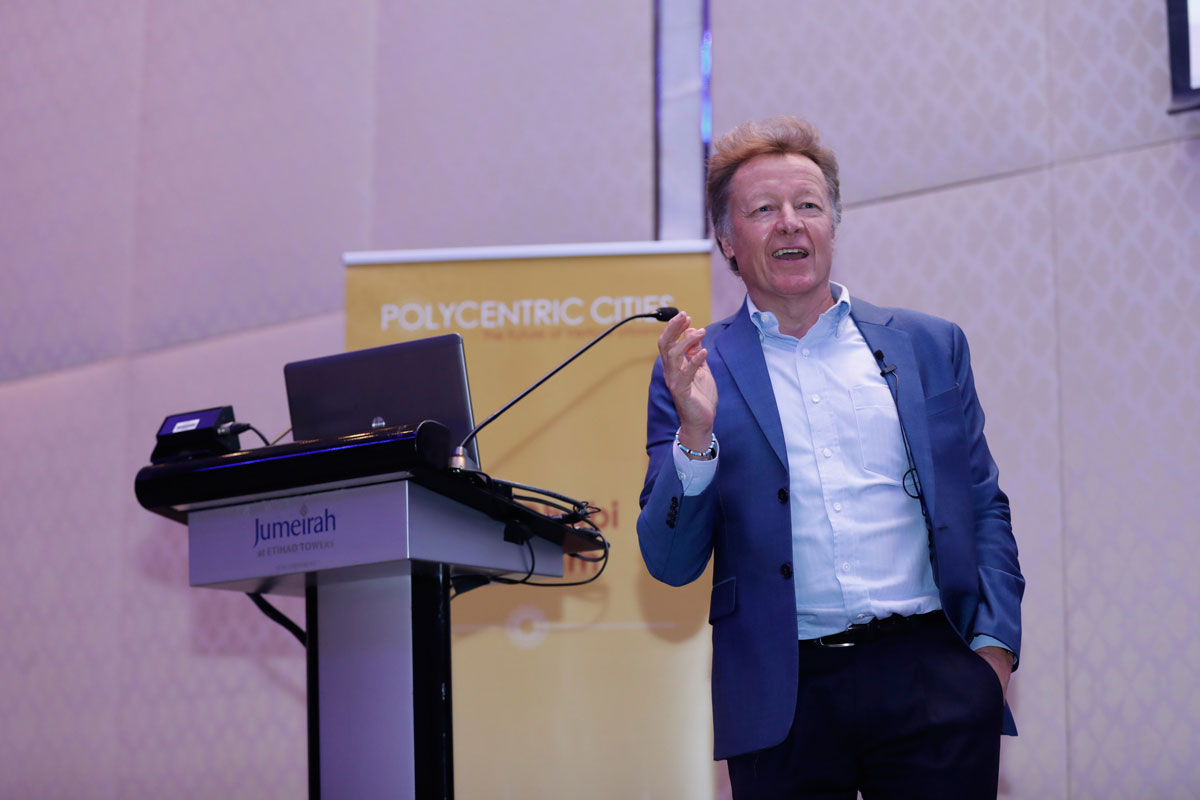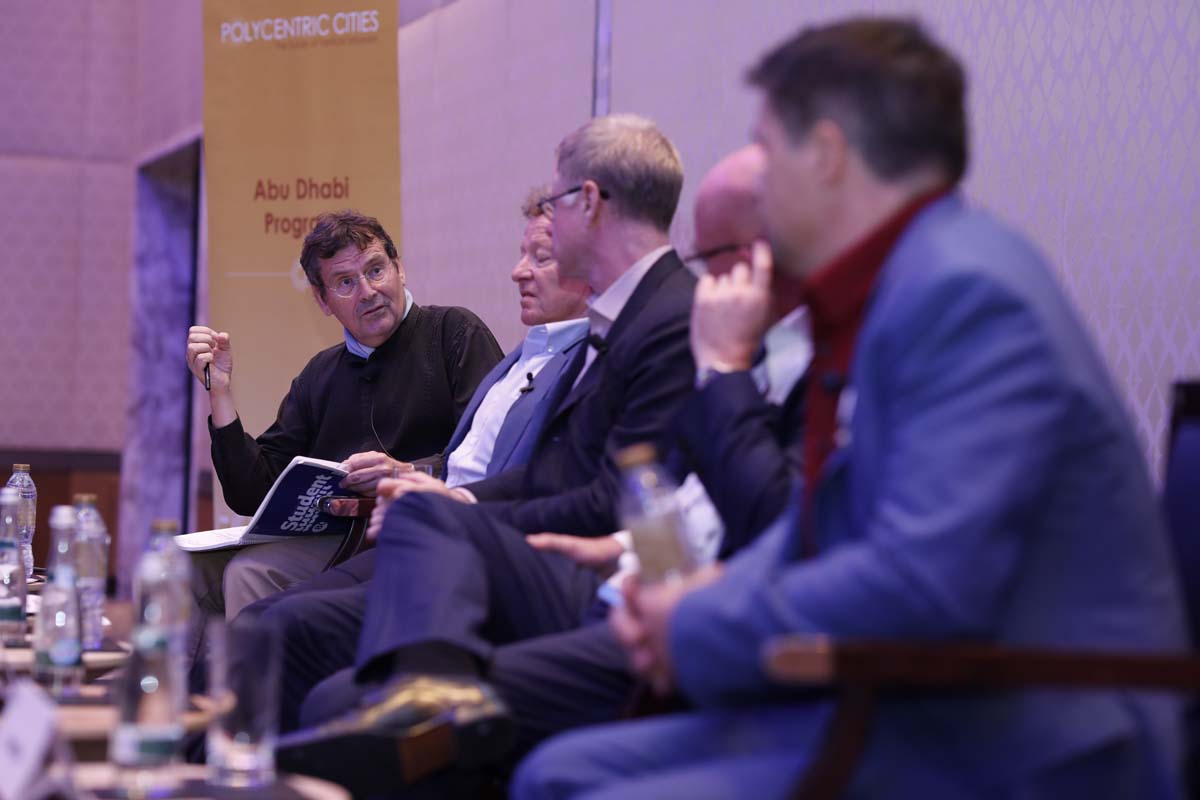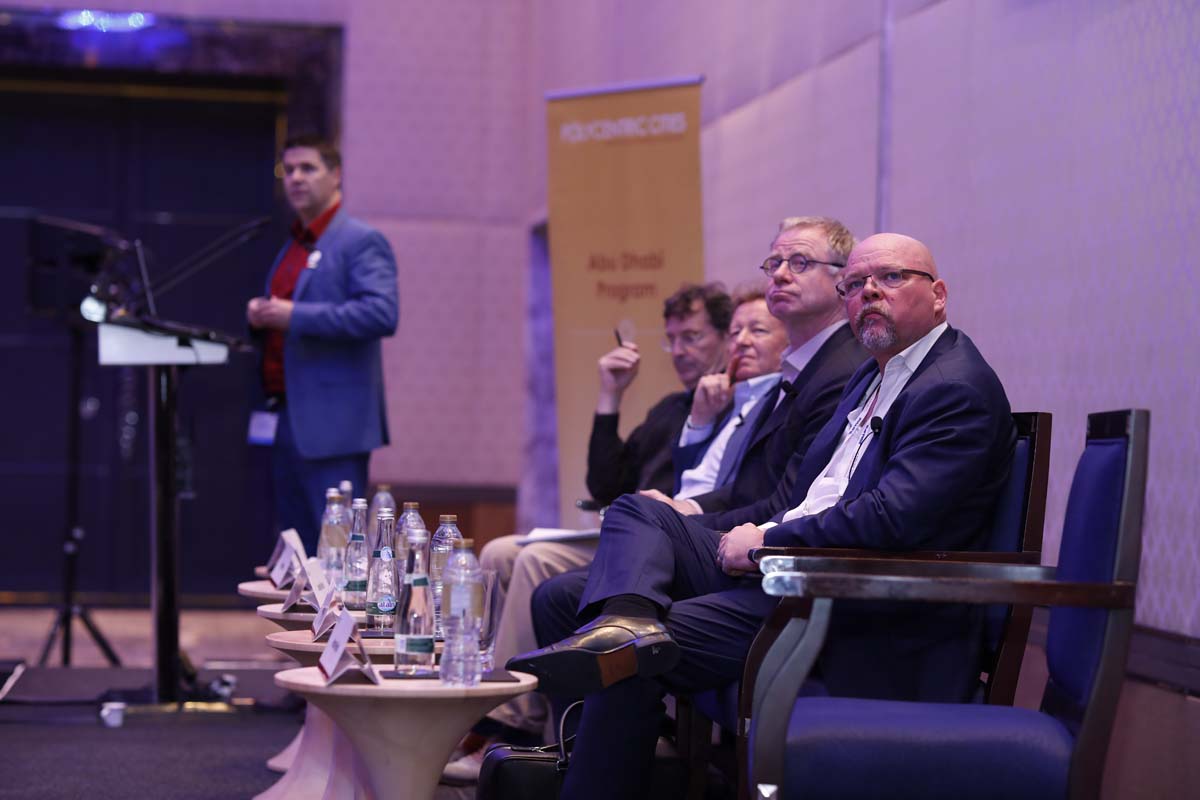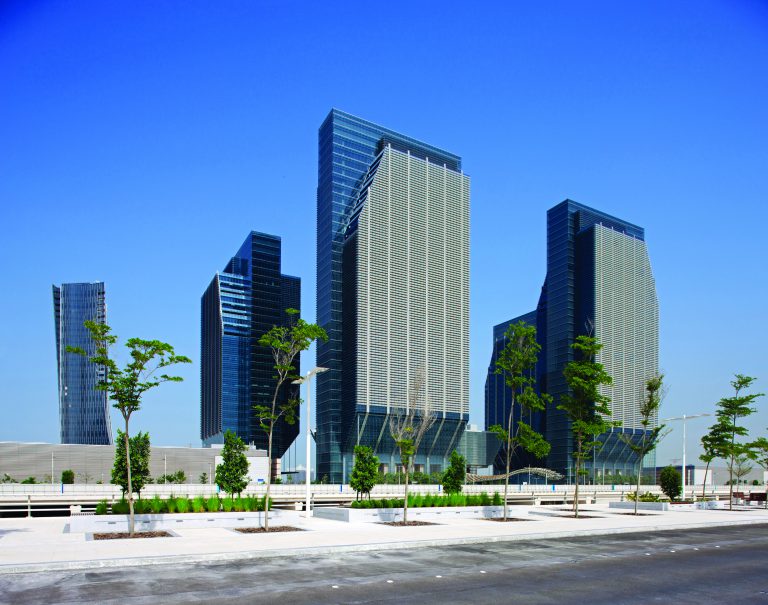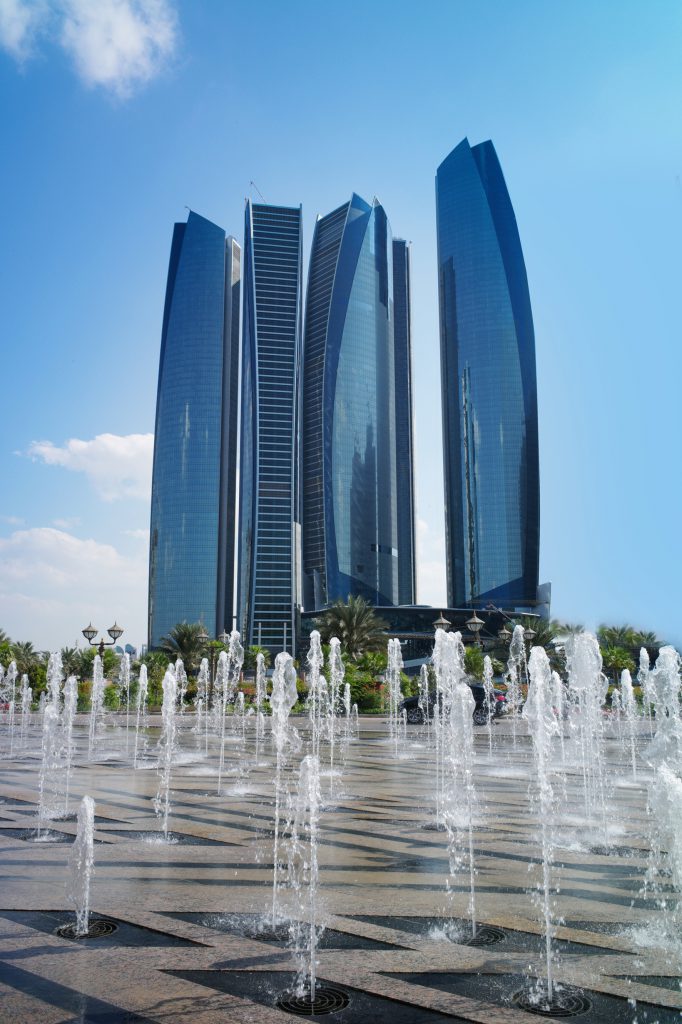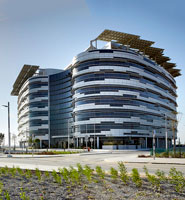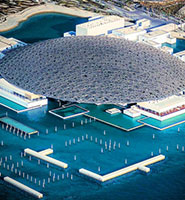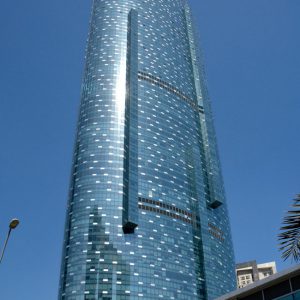Delegates experienced the vibrant city of Abu Dhabi on Days 5 and 6 of the conference, where they engaged in a rich 1.5-day program that explored the city’s premier developments, infrastructure hubs, and cultural sites. This regional city program incorporated three half-day segments that focused on unique themes, each progressing from a presentation format to expansive tours, site visits, and technical demonstrations. The programs were led by CTBUH experts and took place at prominent venues in Abu Dhabi. The presentation program and delegate accommodations were at the five-star Jumeirah Hotel at Etihad Towers, a mixed-use development located on the prestigious coastline of Khalidyah, comprising five gently curving towers, ranging from 49 to 76 stories above a five-level podium.
As the capital of the United Arab Emirates, and the country’s second-most populous city, Abu Dhabi has emerged as a major urban focal point in the Middle East, rising prominently on a collection of islands and along the mainland near the Persian Gulf. What was once a comparatively small town in the early 1960s has rapidly expanded – both horizontally and vertically – into a modern, advanced metropolis known for its commercial, cultural, and industrial operations. A wholly distinct entity, it is in many ways the counter-node to Dubai in the Emirates, in the same sense that each of these cities is itself composed of multiple “polycenters.” The polycentric growth has been accompanied by a concerted effort to forge a local identity. The city’s recent skyscrapers reflect the marriage of Arab architectural traditions and local imperatives of sustainability with international preferences. Projects such as Al Bahar Towers feature innovative active and passive solar mitigation strategies, and employ numerous green technologies. Meanwhile, entire urban districts are being established that present new models for urban development in the Middle East. Masdar City, for example, has become a real-time testing ground for net-zero technology at the neighborhood scale and the incorporation of autonomous vehicles for personal transit. With a youthful population and committed policies toward technological advancement and diversification away from fossil-fuel revenue, Abu Dhabi is experiencing a quantum leap into the future.
Wednesday 24 October
| 9:00AM – 12:00 PM | Delegates traveled by coach with CTBUH from Dubai to Abu Dhabi (1.5 hours), check-in to hotel |
| 12:30 – 1:30 PM | Registration & Lunch |
1:30 – 3:00 PM |
Session 1 – Abu Dhabi Urbanism: An OverviewAs the national capital of the United Arab Emirates and a major headquarters for the global energy industry, Abu Dhabi has a unique role to play in the region and a unique identity. This session explored the plans of a city that is determined to enhance its role as a global tourist destination, trading hub, and a center of the conversation about the future of energy. Presentations detailed the effect this ambition has had, and will have, on the skyline and the rest of the built environment. |
| 3:00 – 3:30 PM | Coffee Break |
3:30 – 4:45 PM |
Session 2 – Abu Dhabi & Urban PolycentricityContinuing the discussion from Plenary 2 in Dubai, this panel discussion applied the question of urban polycentricity to Abu Dhabi. Composed of numerous islands, the expanding city now faces the challenge of how to develop them coherently and sustainably, striking the right balance between skyline dynamism and community-building; international flair and local vernacular; human amenities and natural splendor. As a polycentric city, and as a critical node itself in the urbanized Emirati coast and in the global tourism and logistics network, Abu Dhabi is a unique laboratory for discussion of this emerging development trend. |
| 5:30 – 7:30 PM | Networking Reception |
Thursday 25 October
| 8:30AM – 12:00 PM | Off-Site Programs |
||||||||||
|
|||||||||||
| 12:30 – 1:30 PM | Lunch | ||||||||||
1:30 – 3:00 PM |
Session 3 – Middle East Cities: PlacemakingOne of the great challenges for fast-growing global cities is the question of how a distinctive identity can be forged that will be meaningful to locals and representative of the city’s unique role on the global stage. The burgeoning cities of the Middle East have grappled with this concern in intriguing ways, using their deep resources and enviable geographic positions to transform from modest settlements to great metropolises in the desert, becoming places that are both distinct and eminently habitable. This session explored several critical place-making projects that have helped sculpt contemporary Middle Eastern metropolises. |
||||||||||
| 3:00 – 3:30 PM | Coffee Break | ||||||||||
3:30 – 5:00 PM |
Session 4 – Cities 2050: Where Will We Be?According to recent data from the United Nations, the world will see its collective urban population increase by nearly 2.5 billion people by 2050, with close to 90% of this growth taking place in Asia and Africa. During that time, many regions will face the continued challenges of economic instability, lagging infrastructure, and environmental degradation. Building on the topic of the third plenary session in Dubai, entitled “50 Forward, 50 Back”, this panel discussion considered how cities of the future must adapt to face these and other challenges, with a view to the role that tall buildings and emerging technologies will play in that effort.View Presentation |
||||||||||
| 5:00 PM | Delegates Depart |

